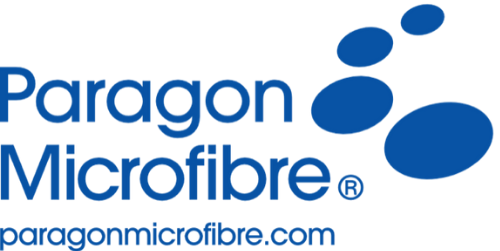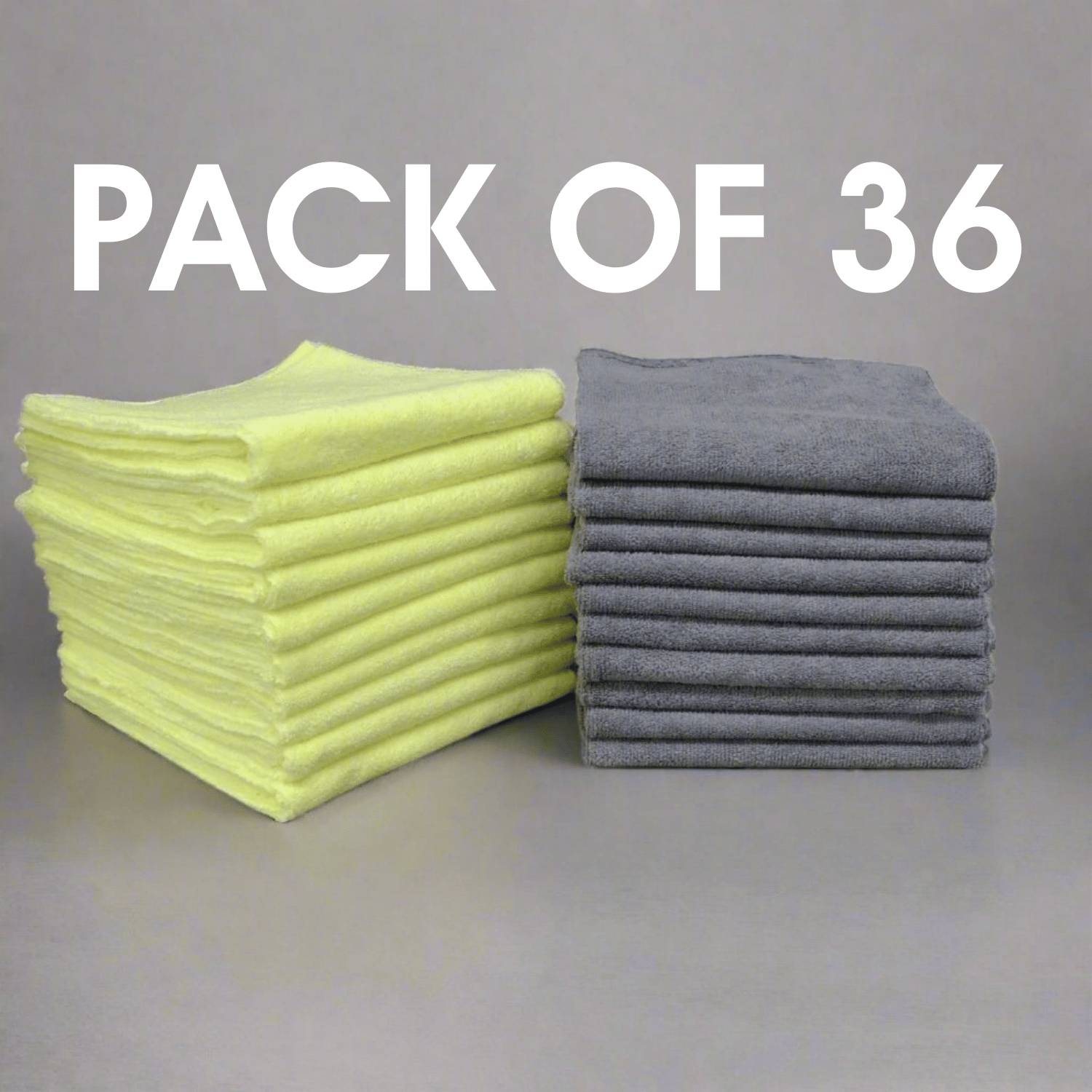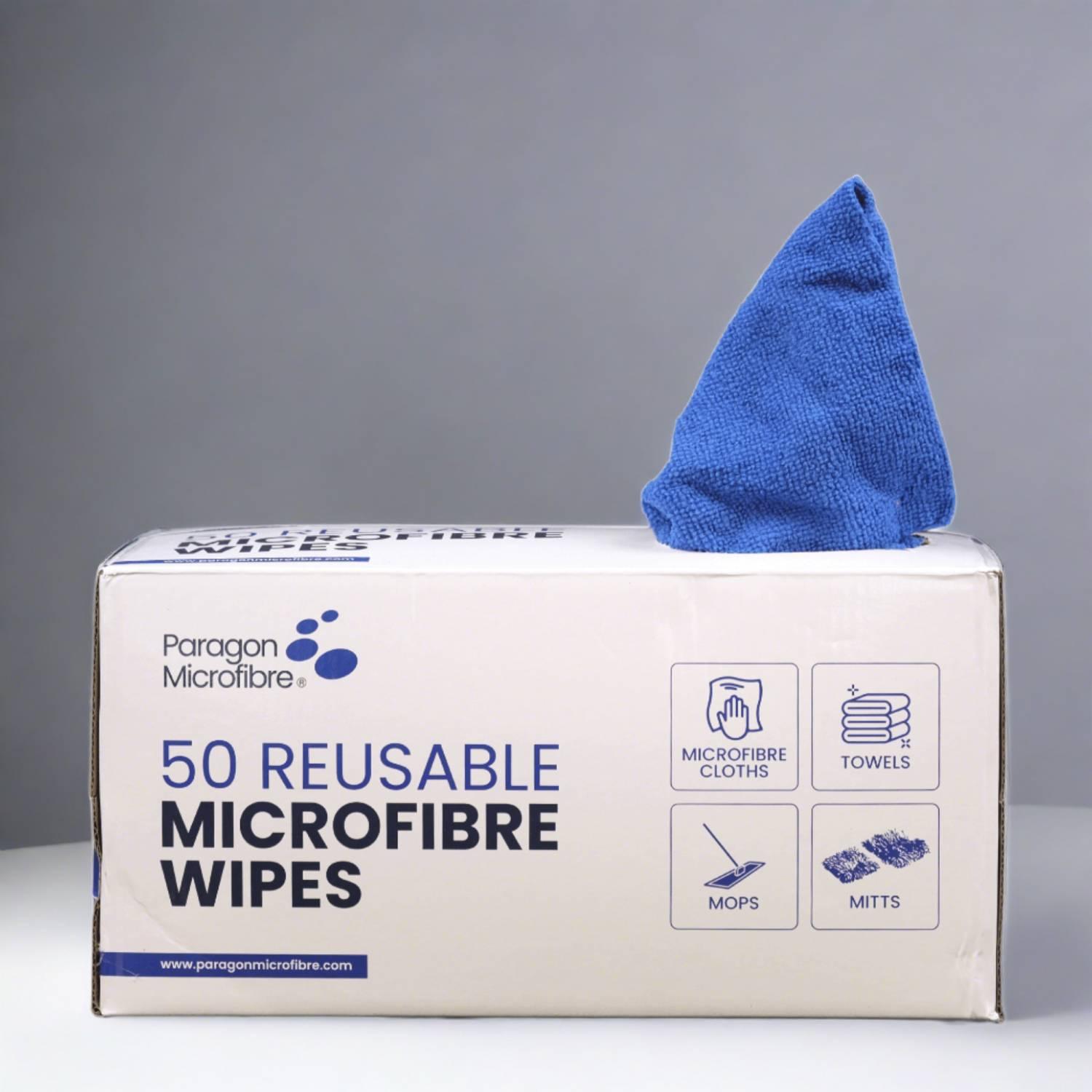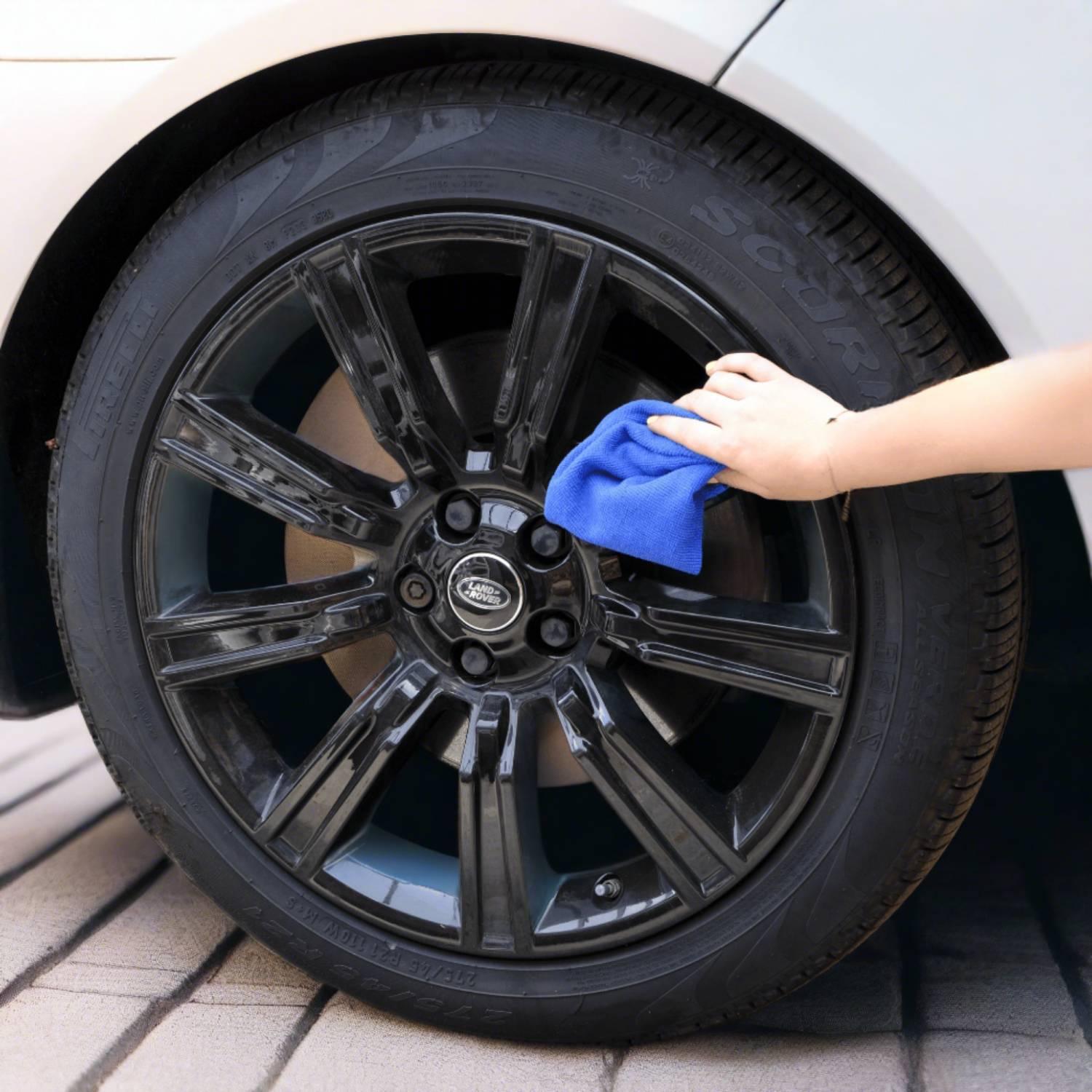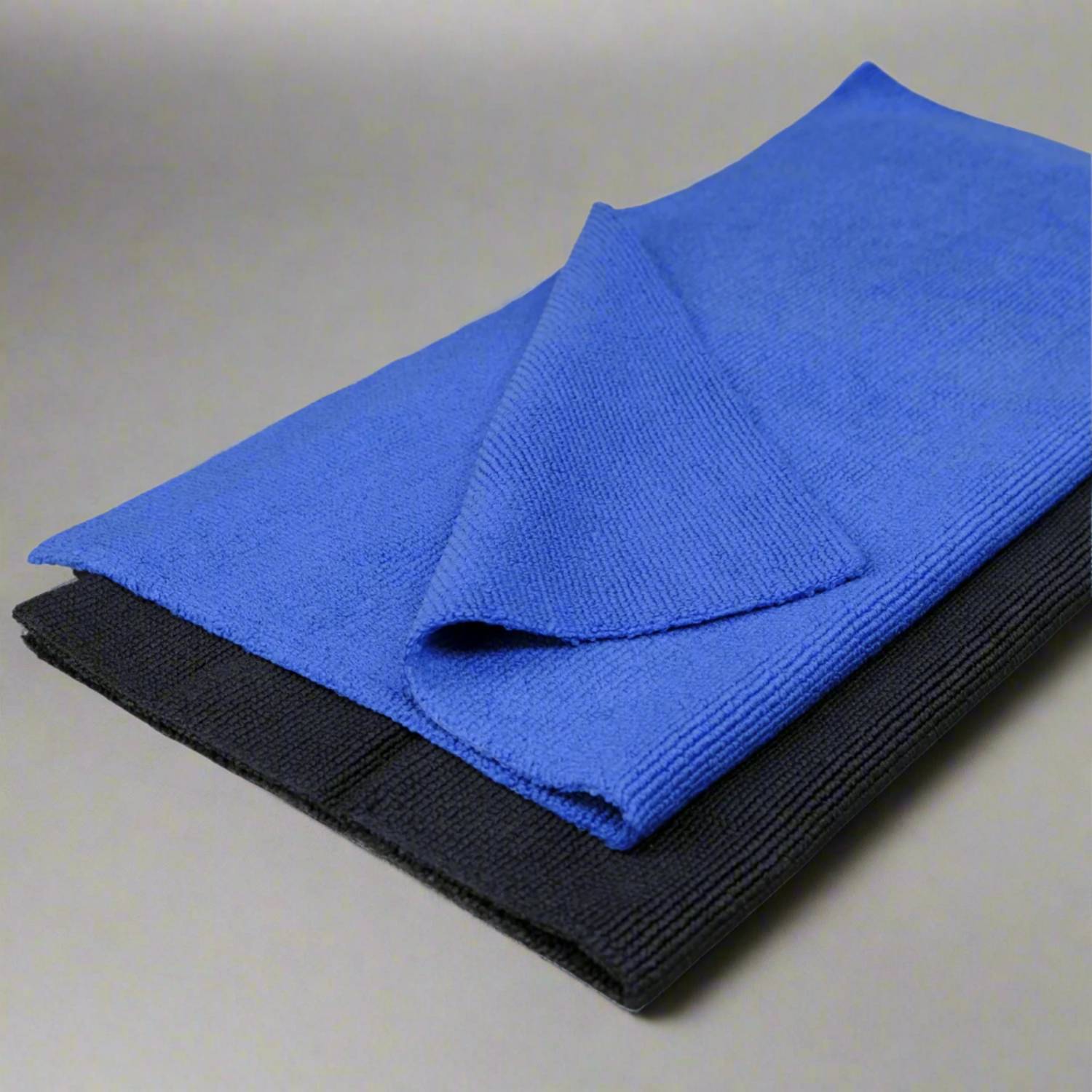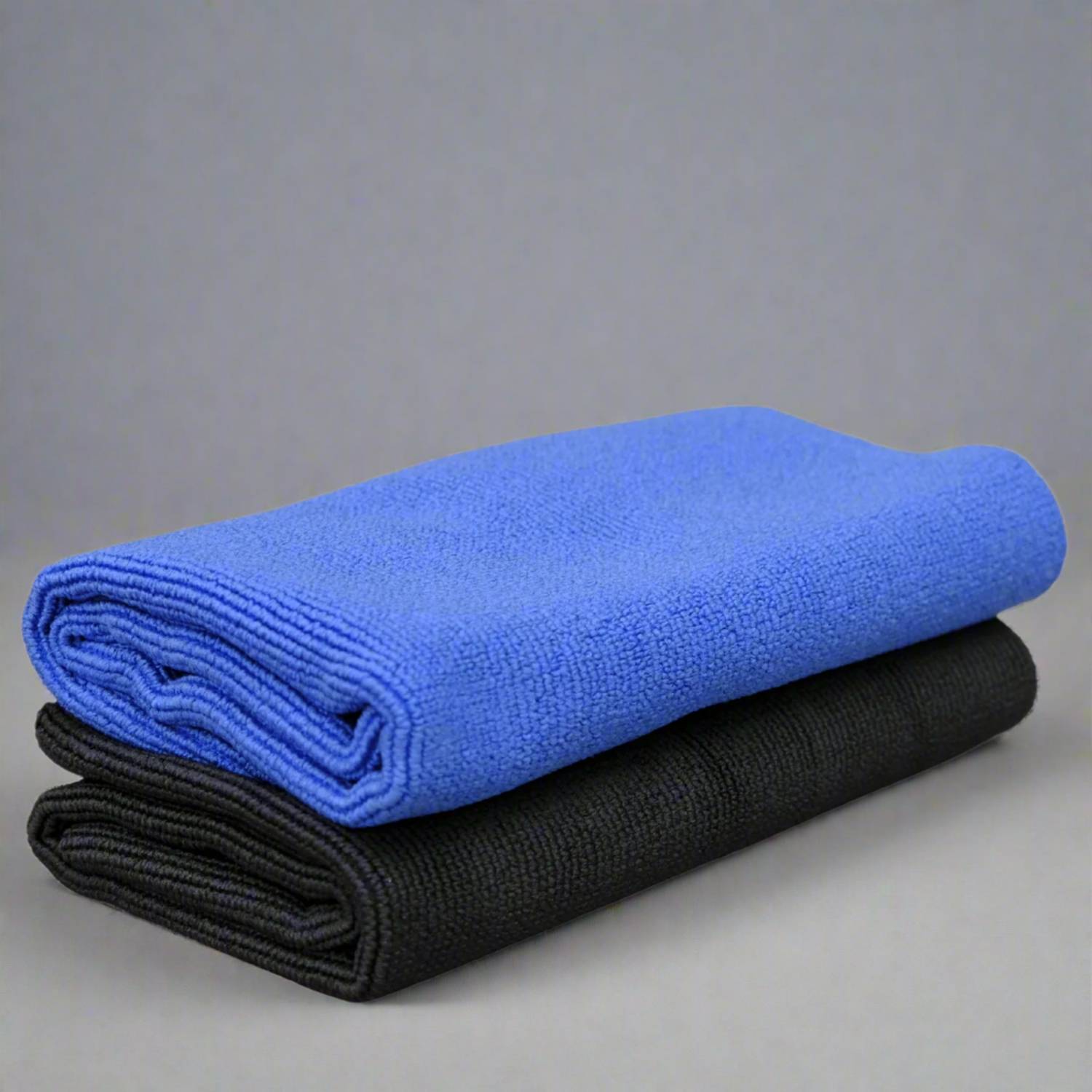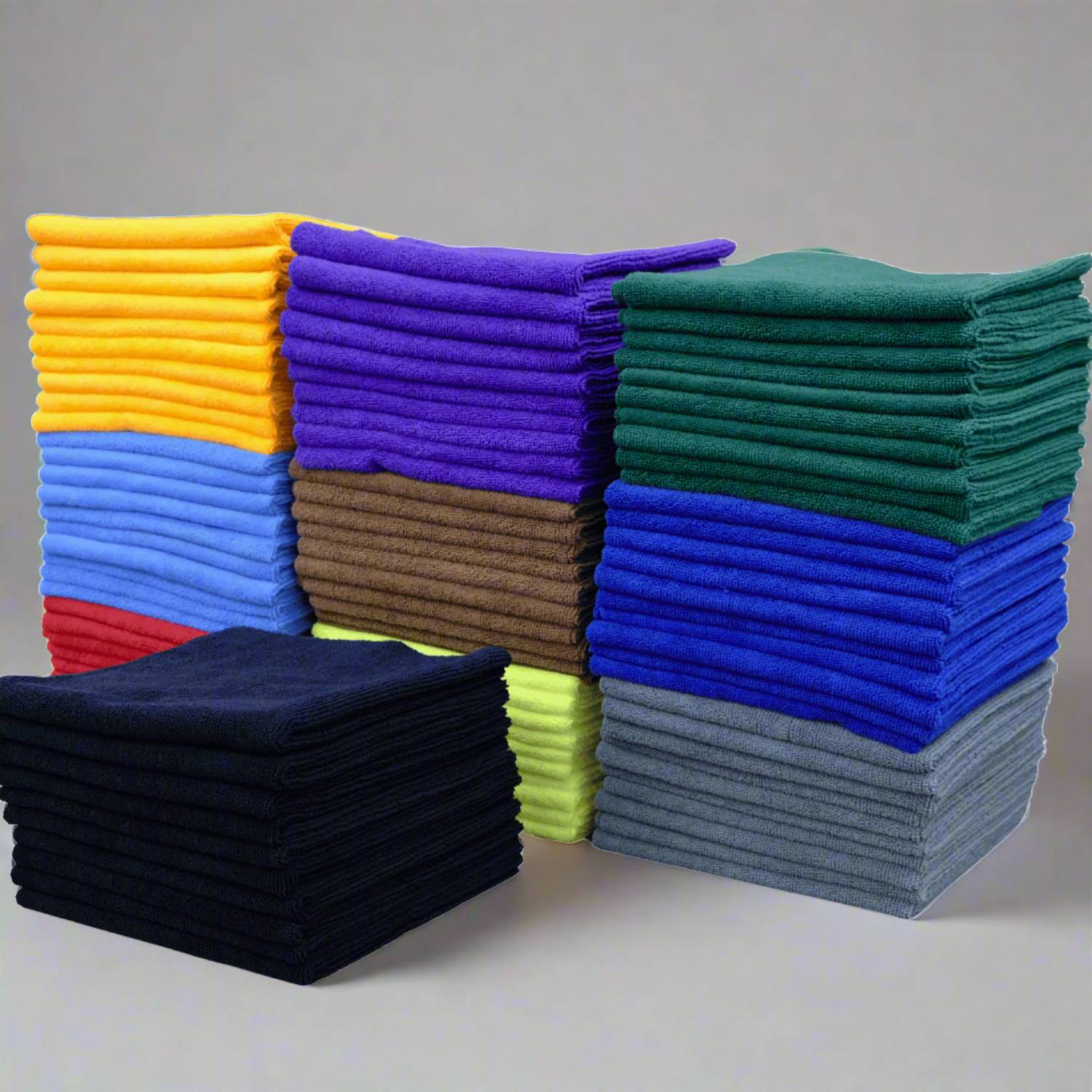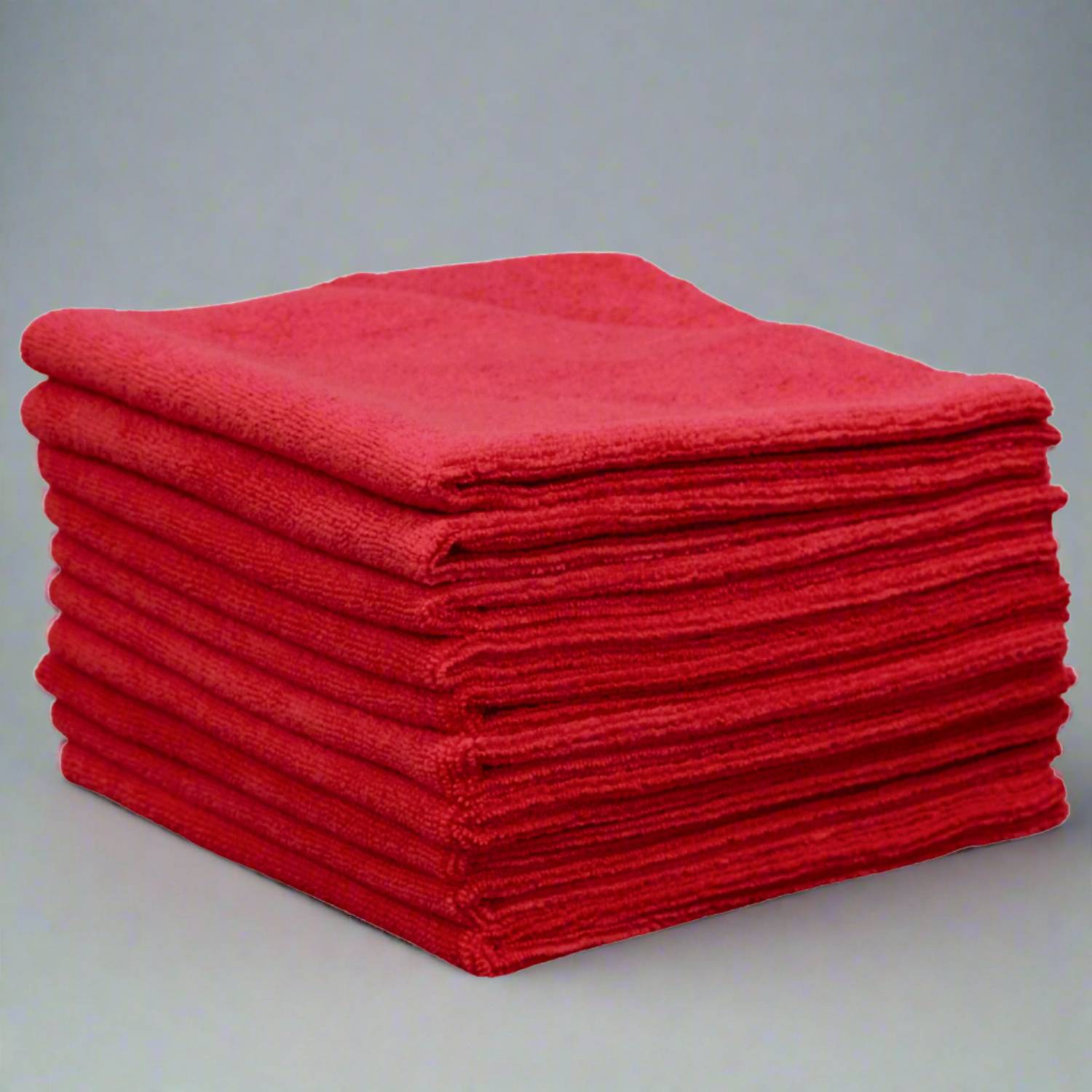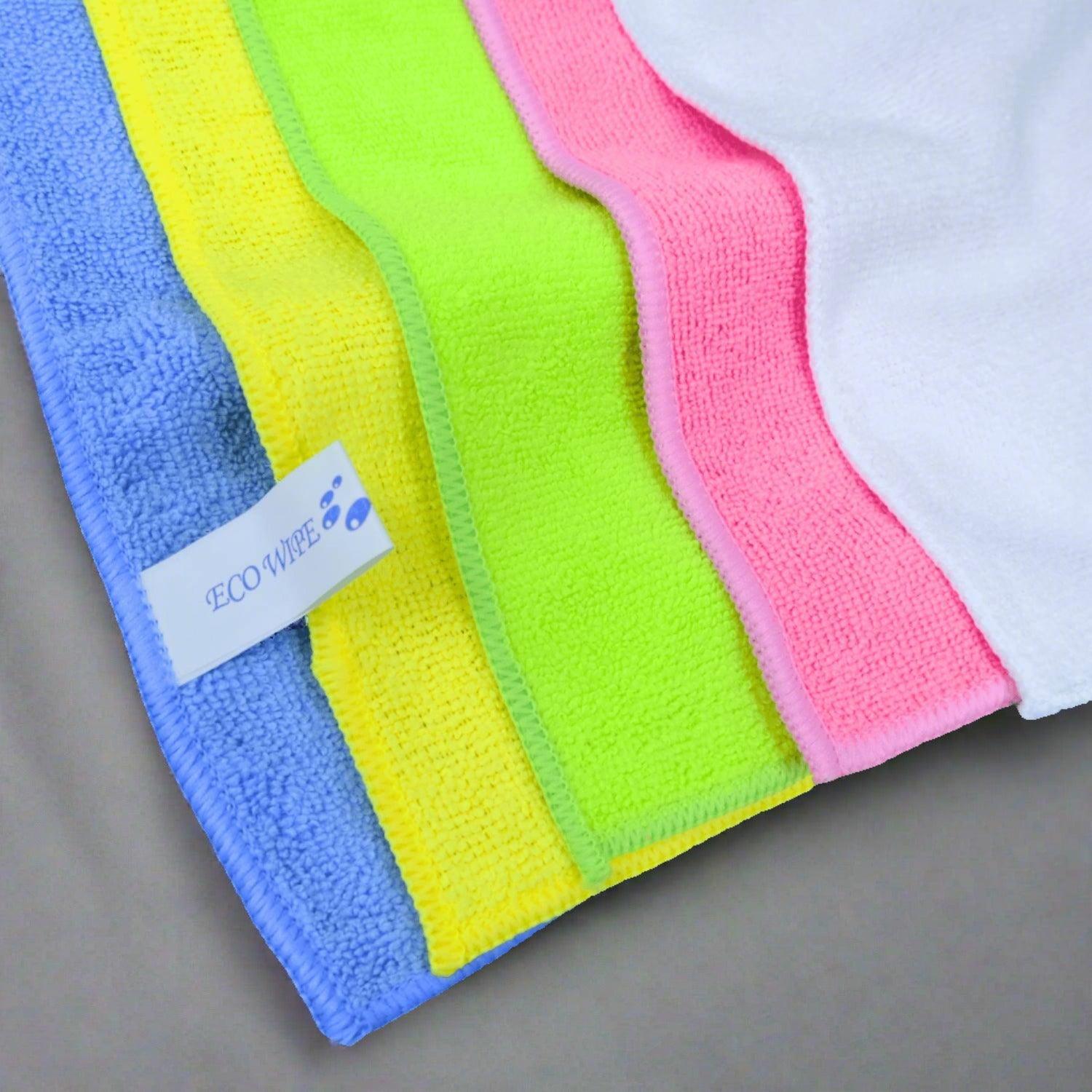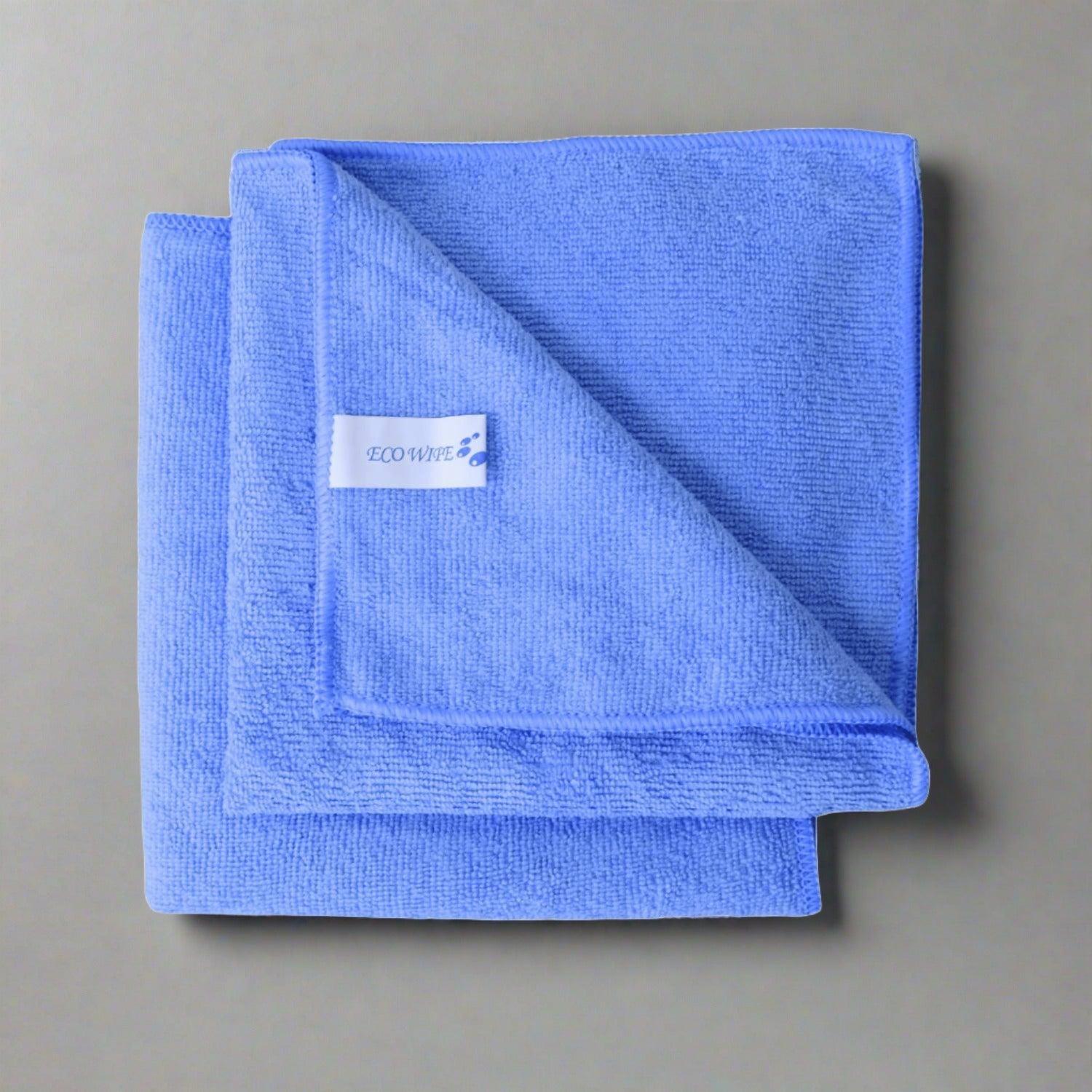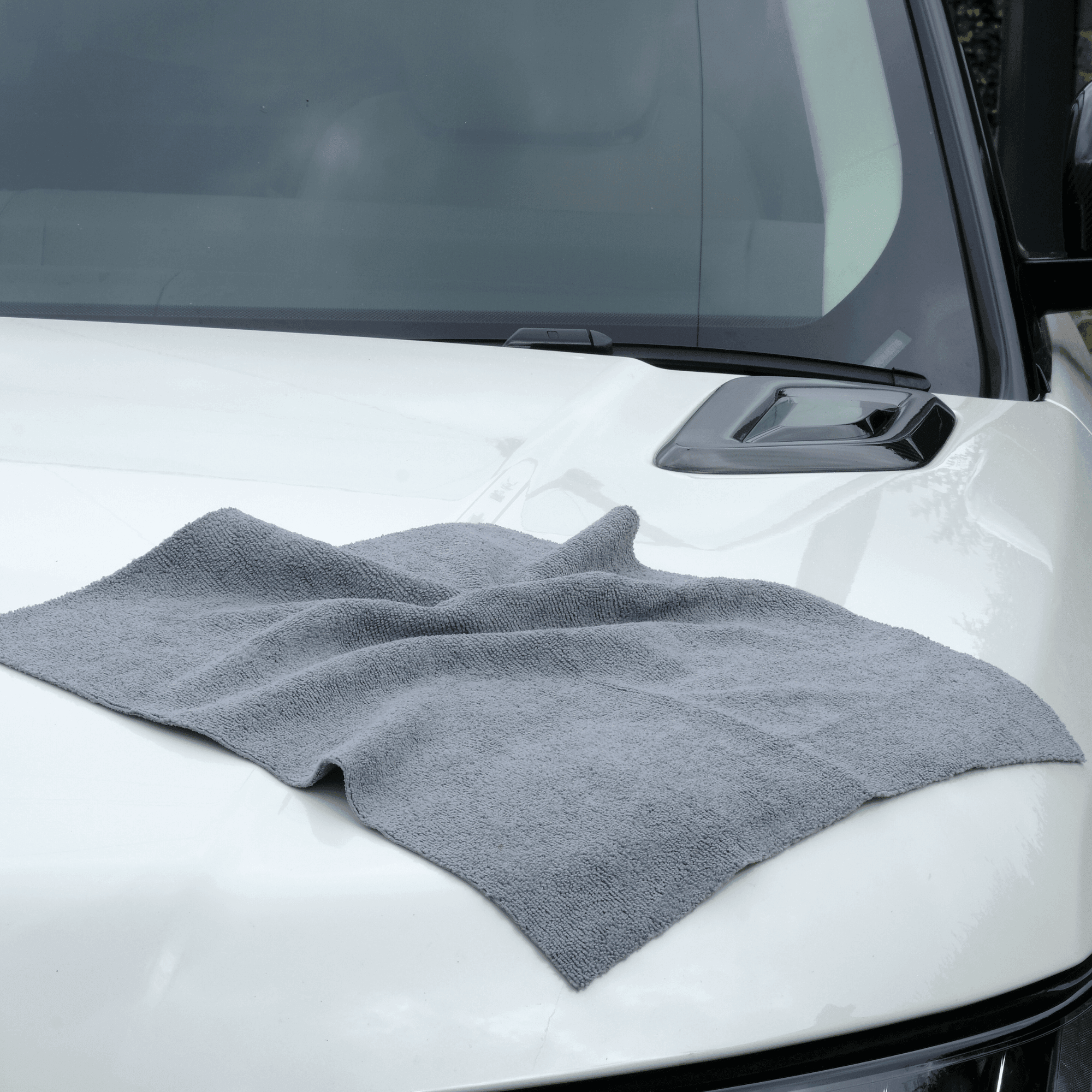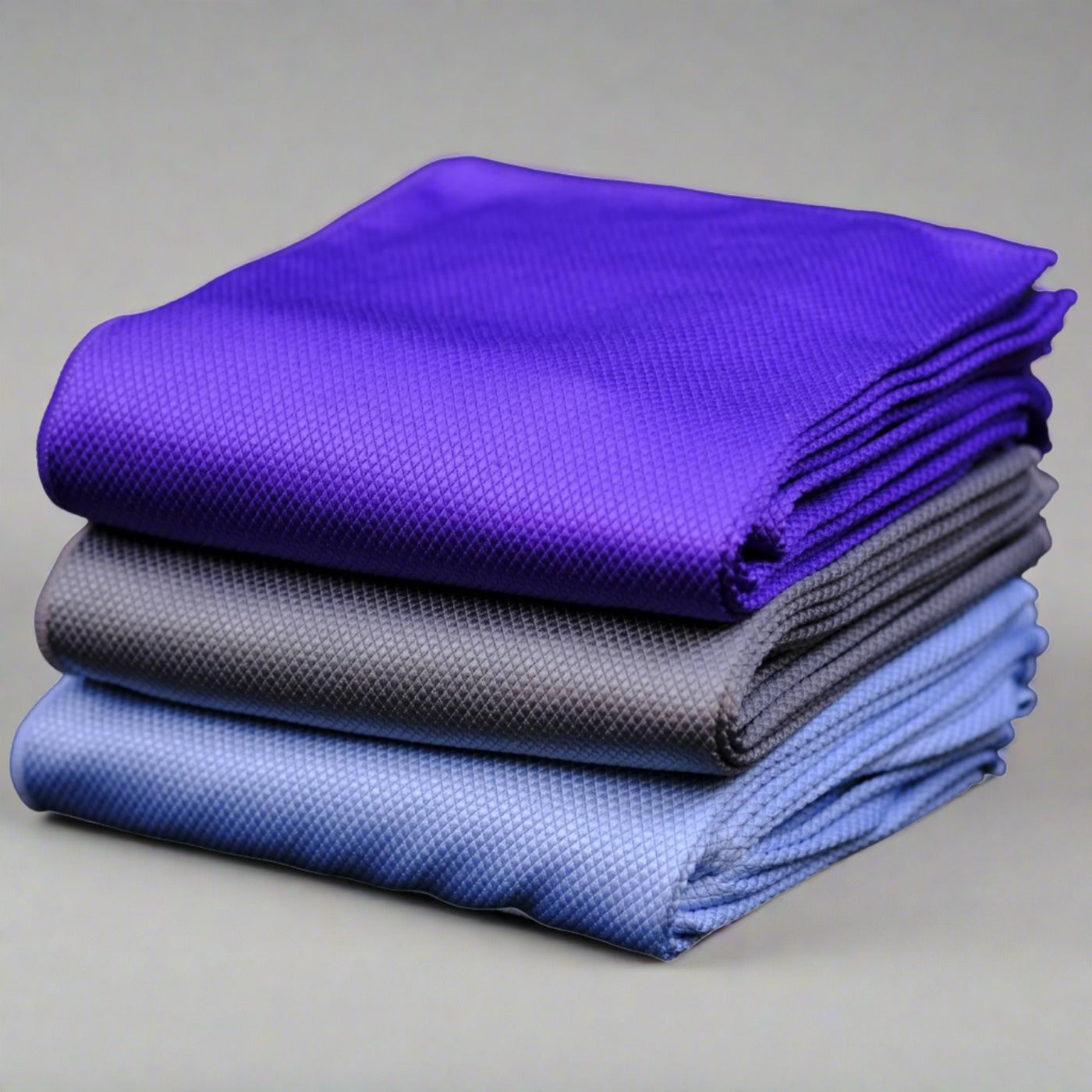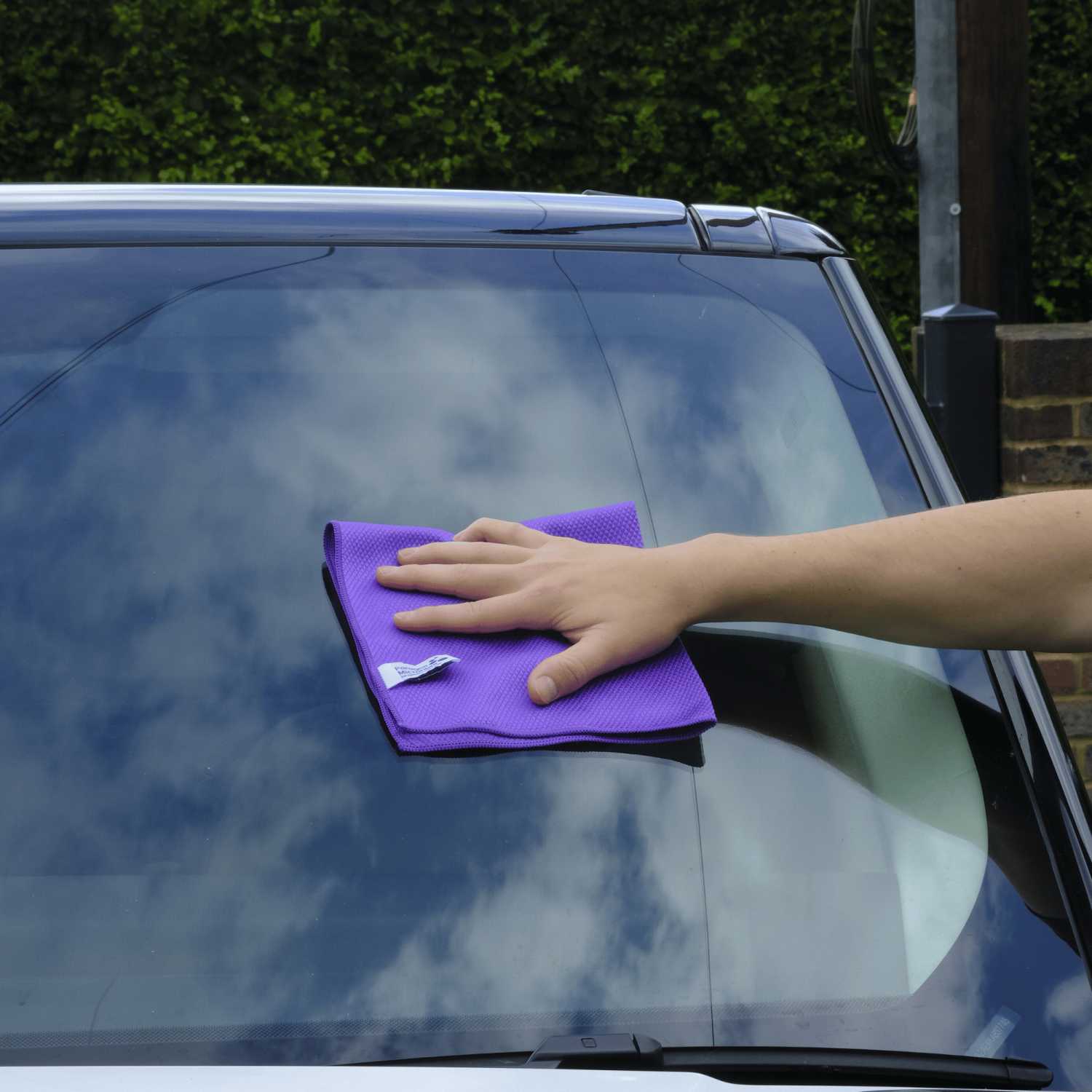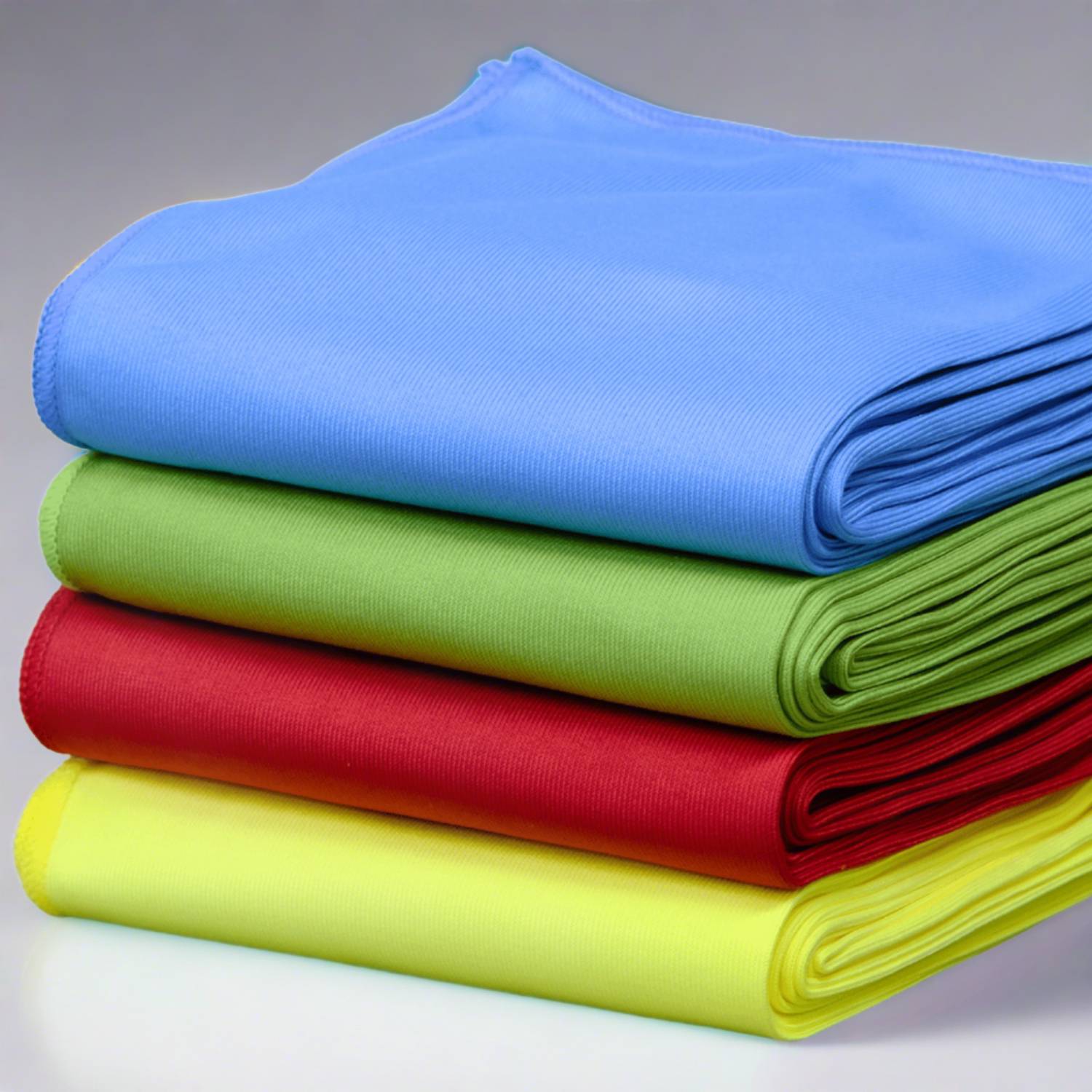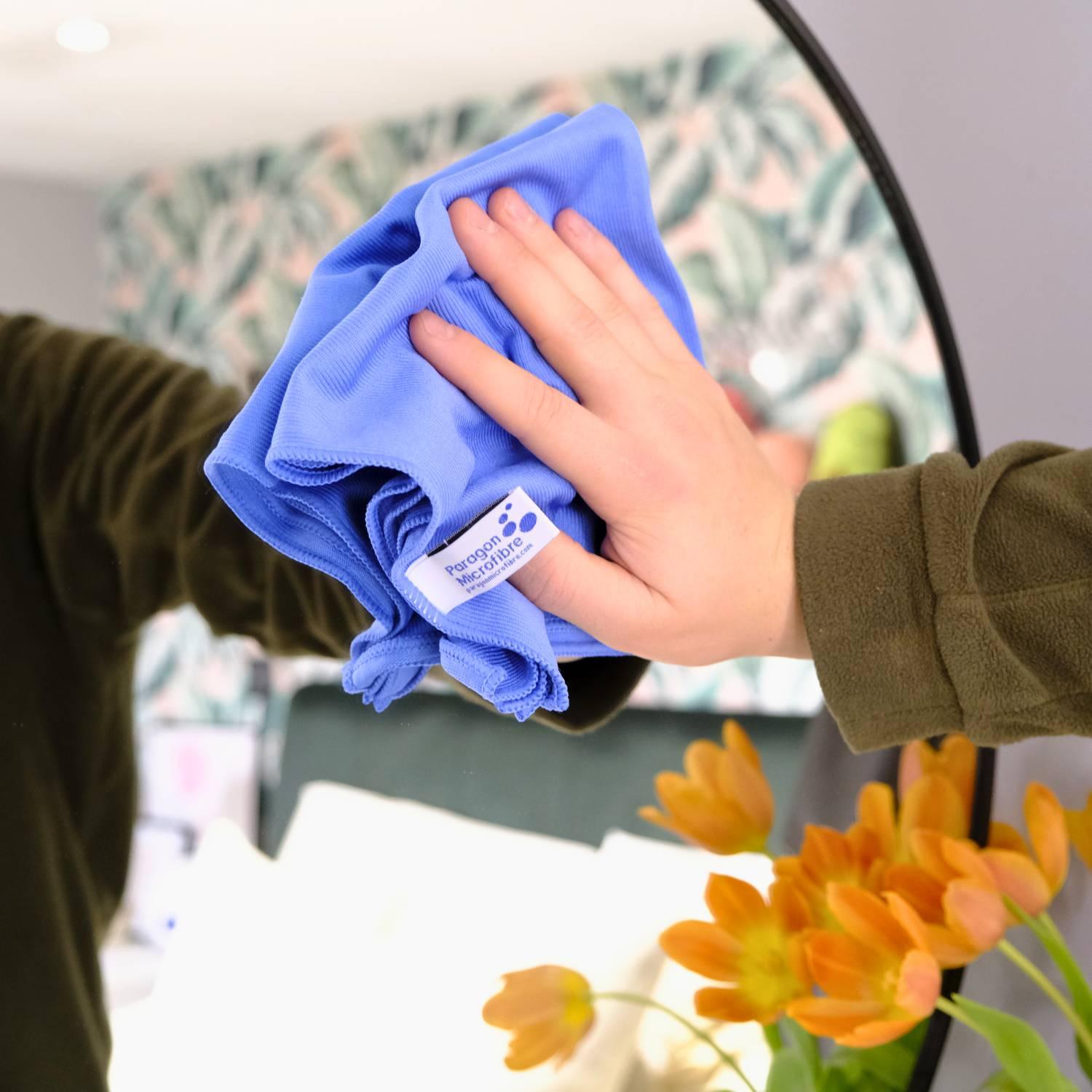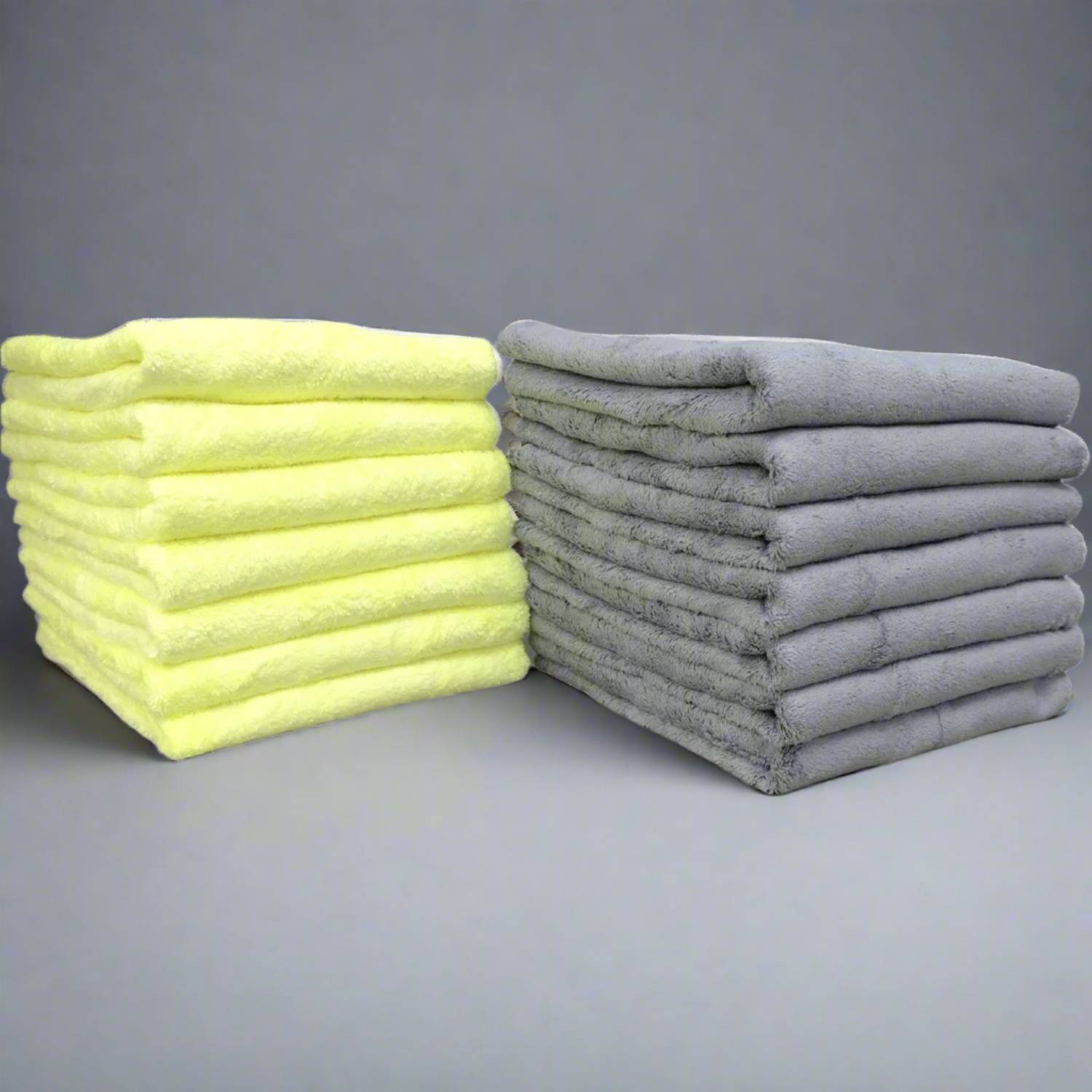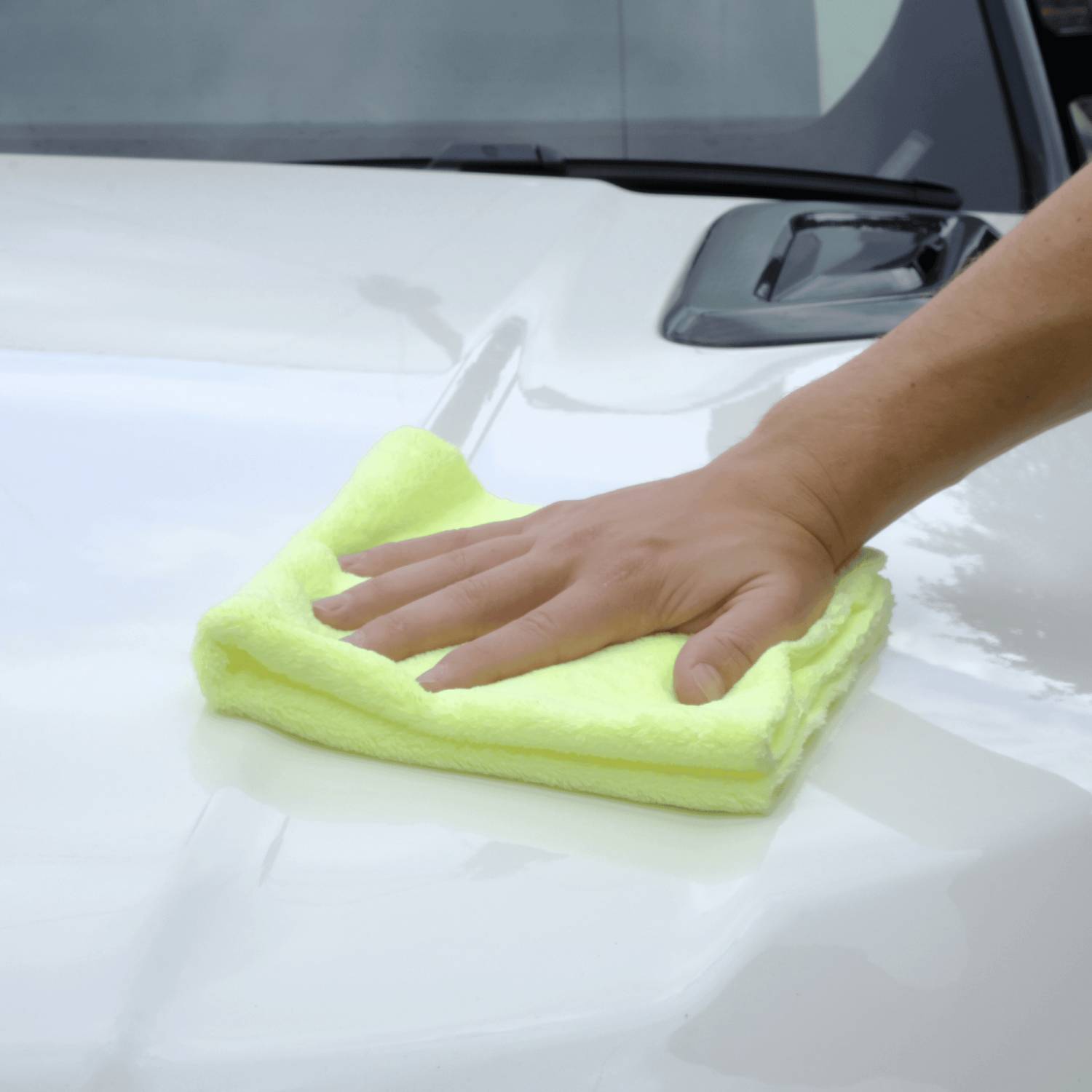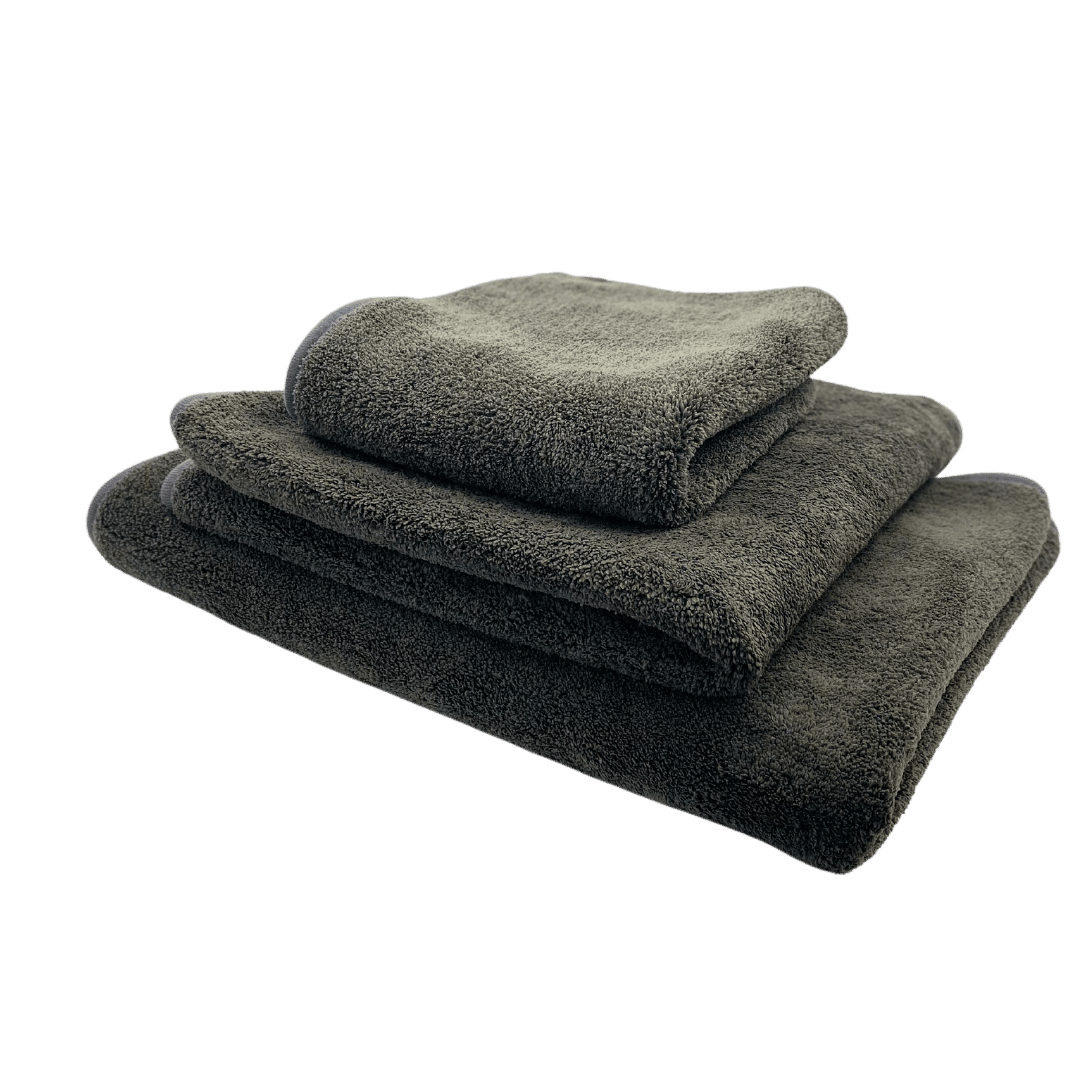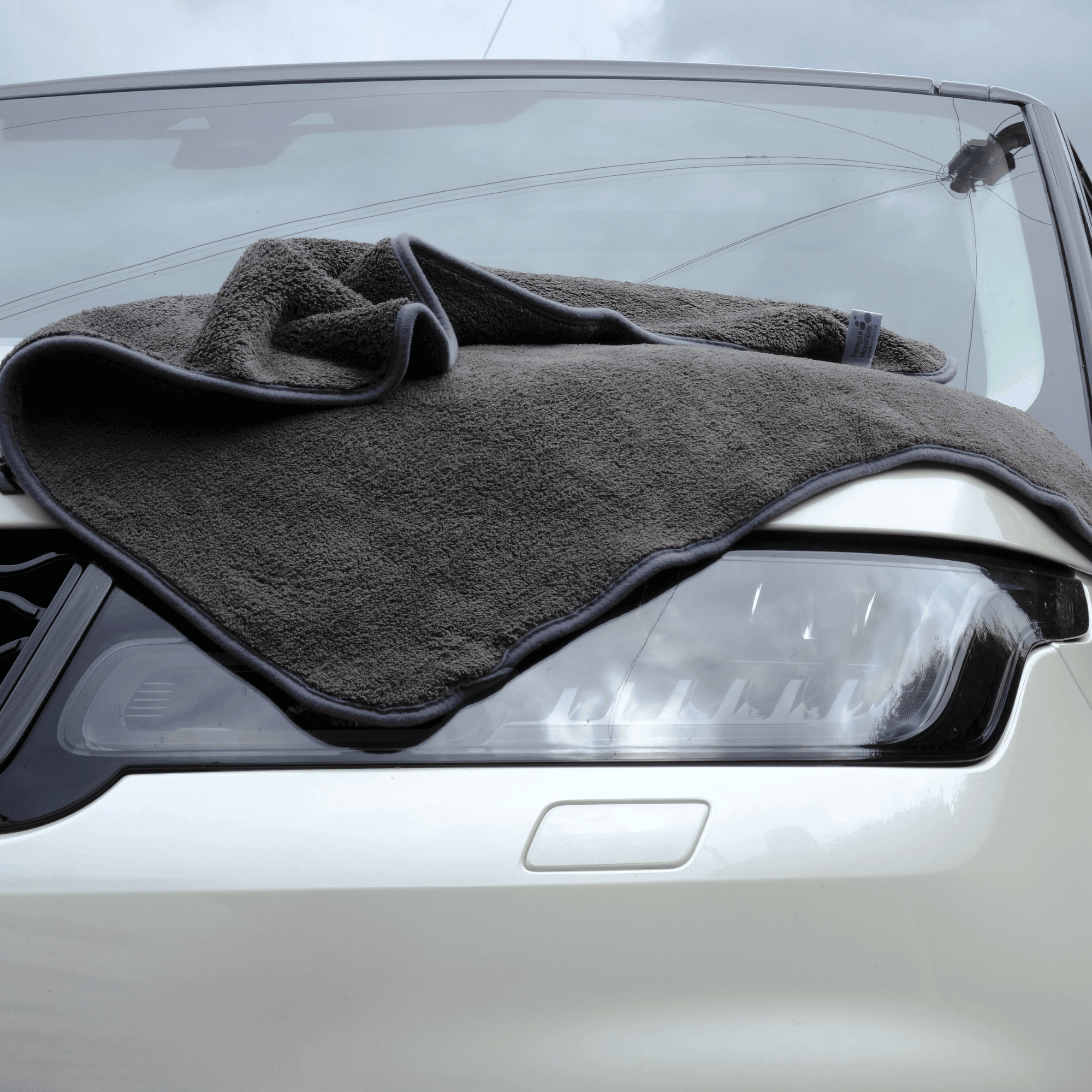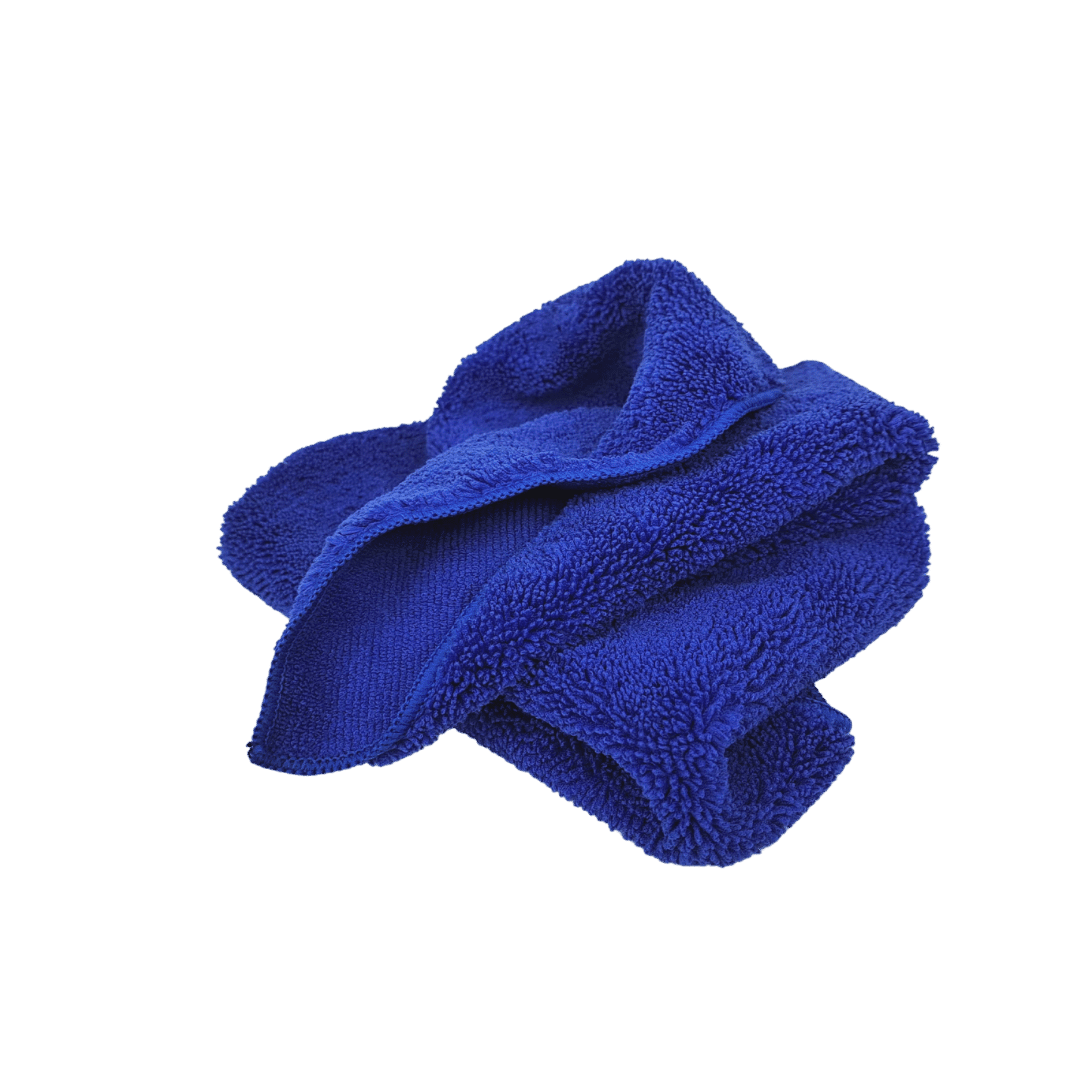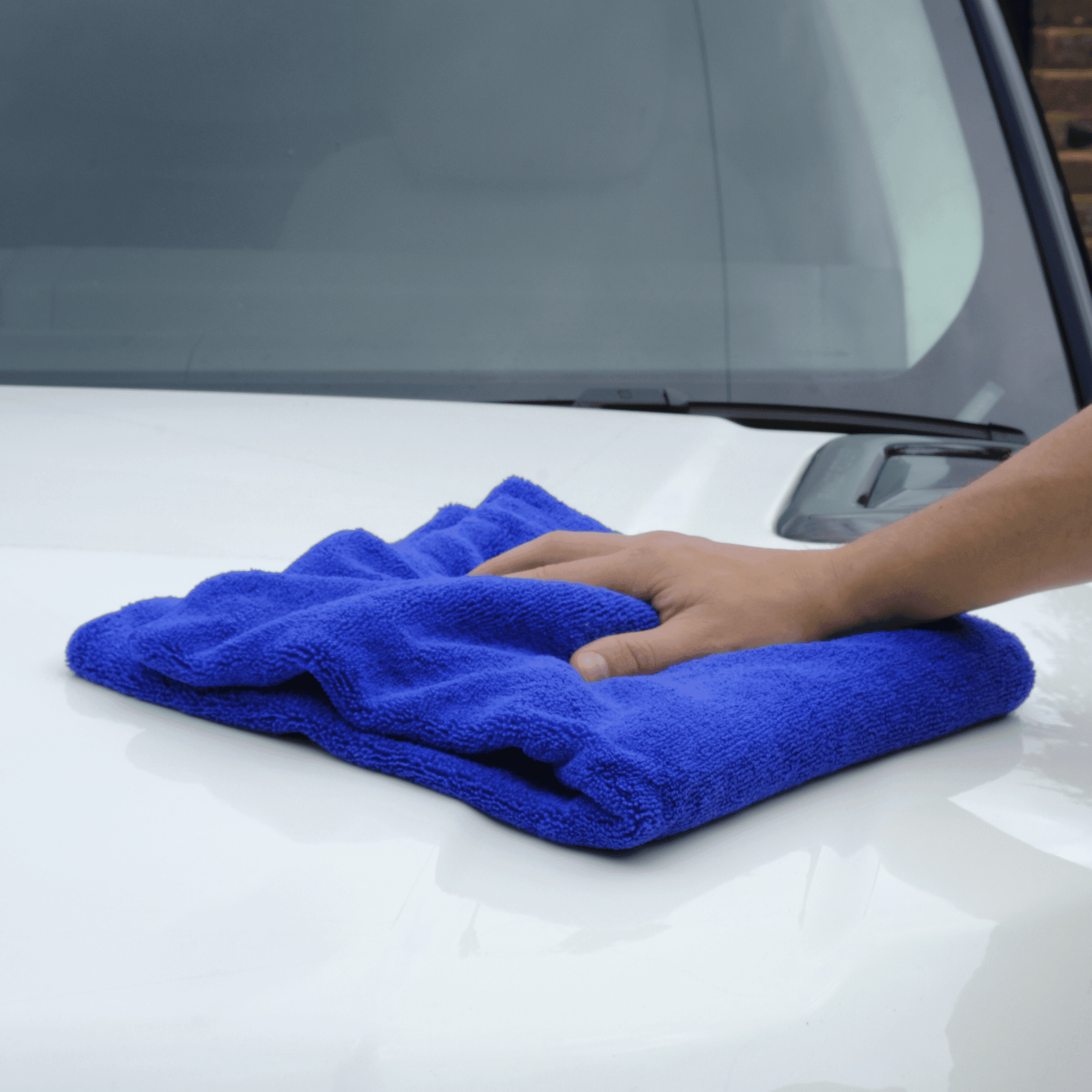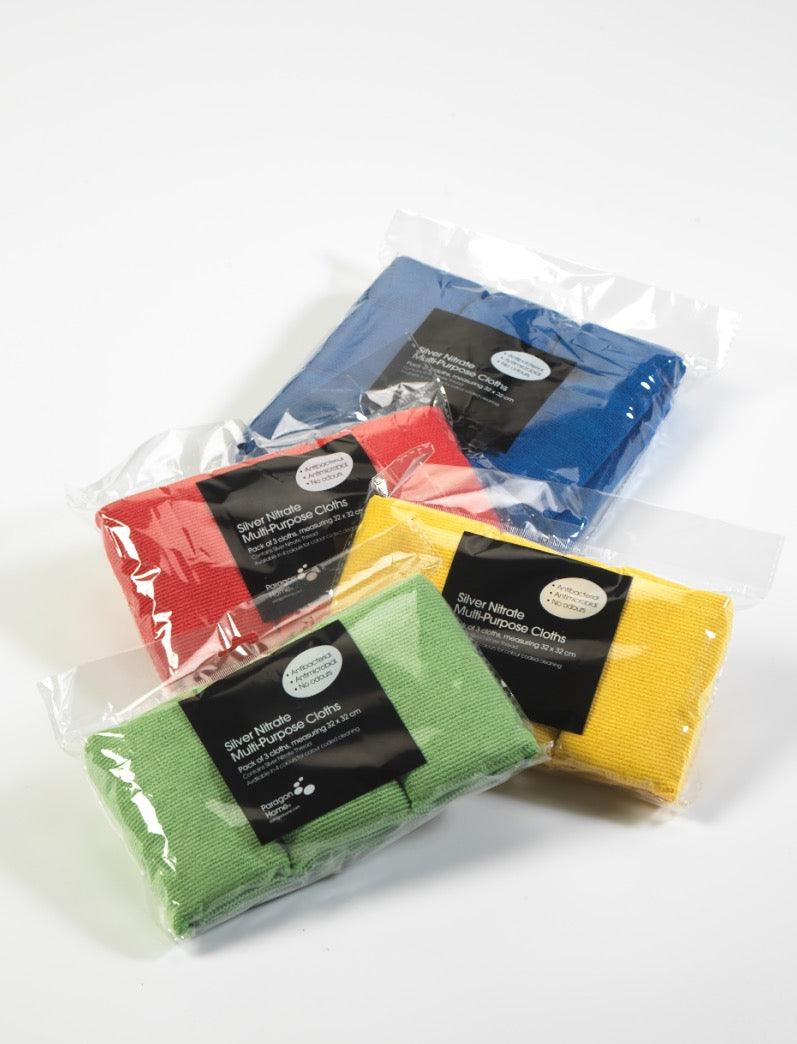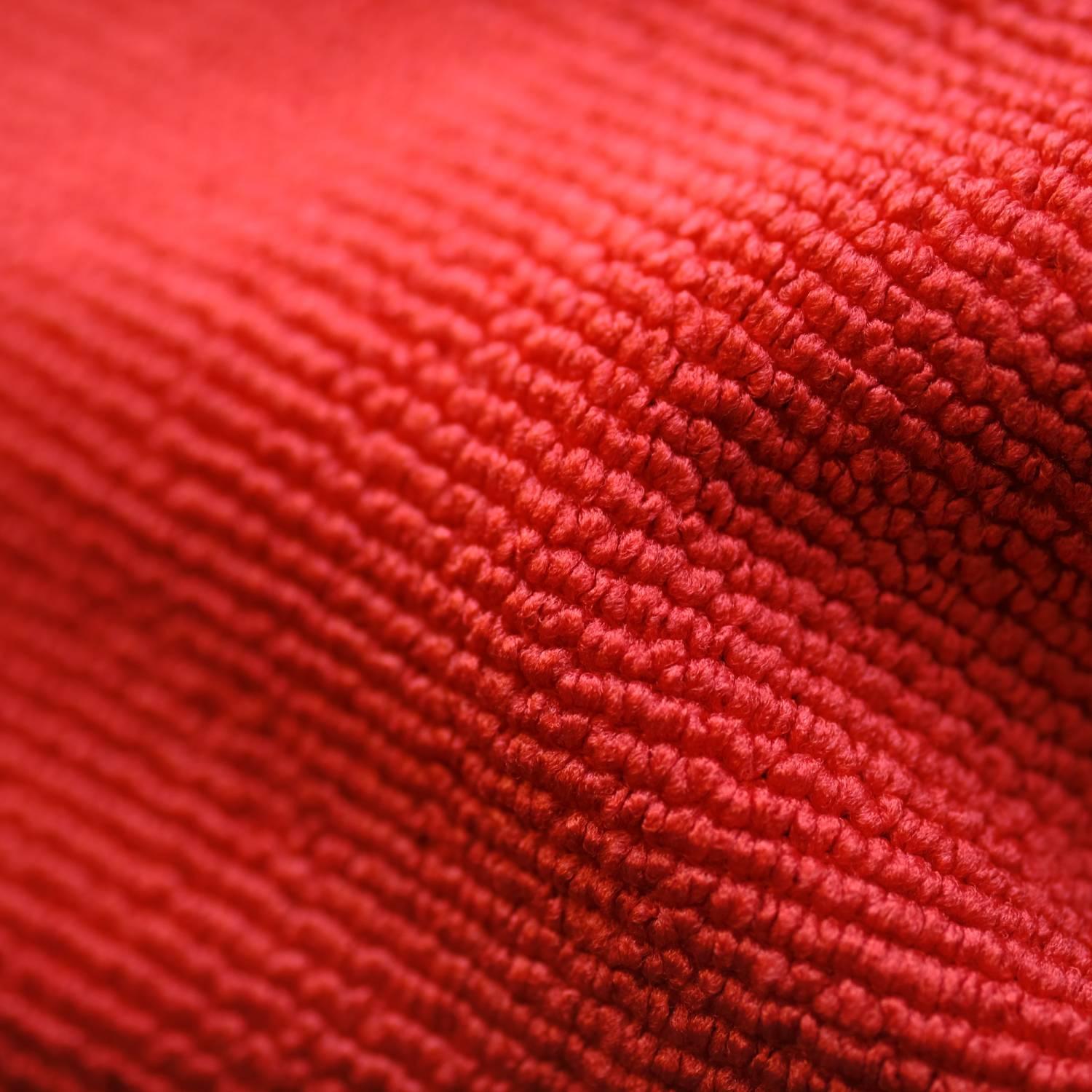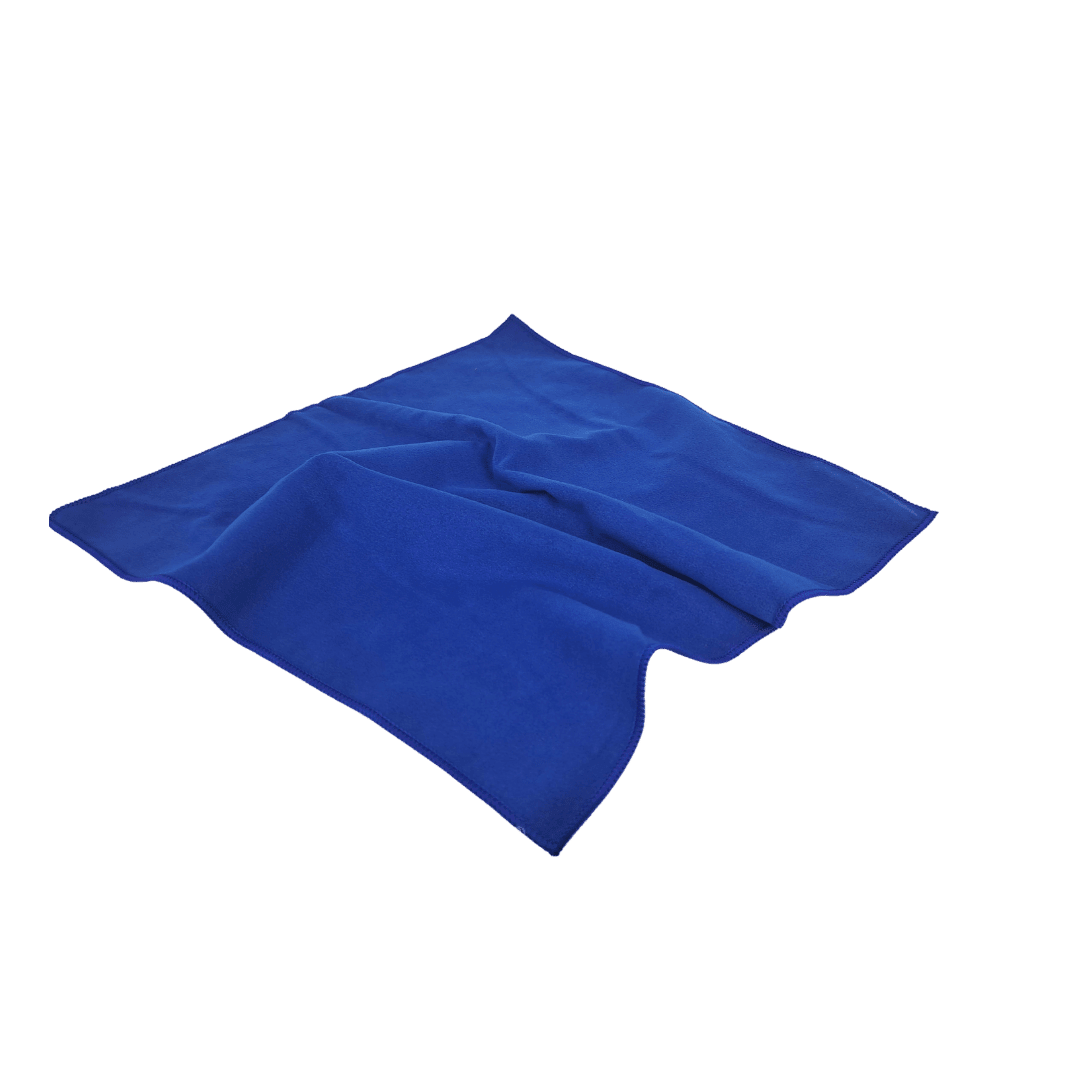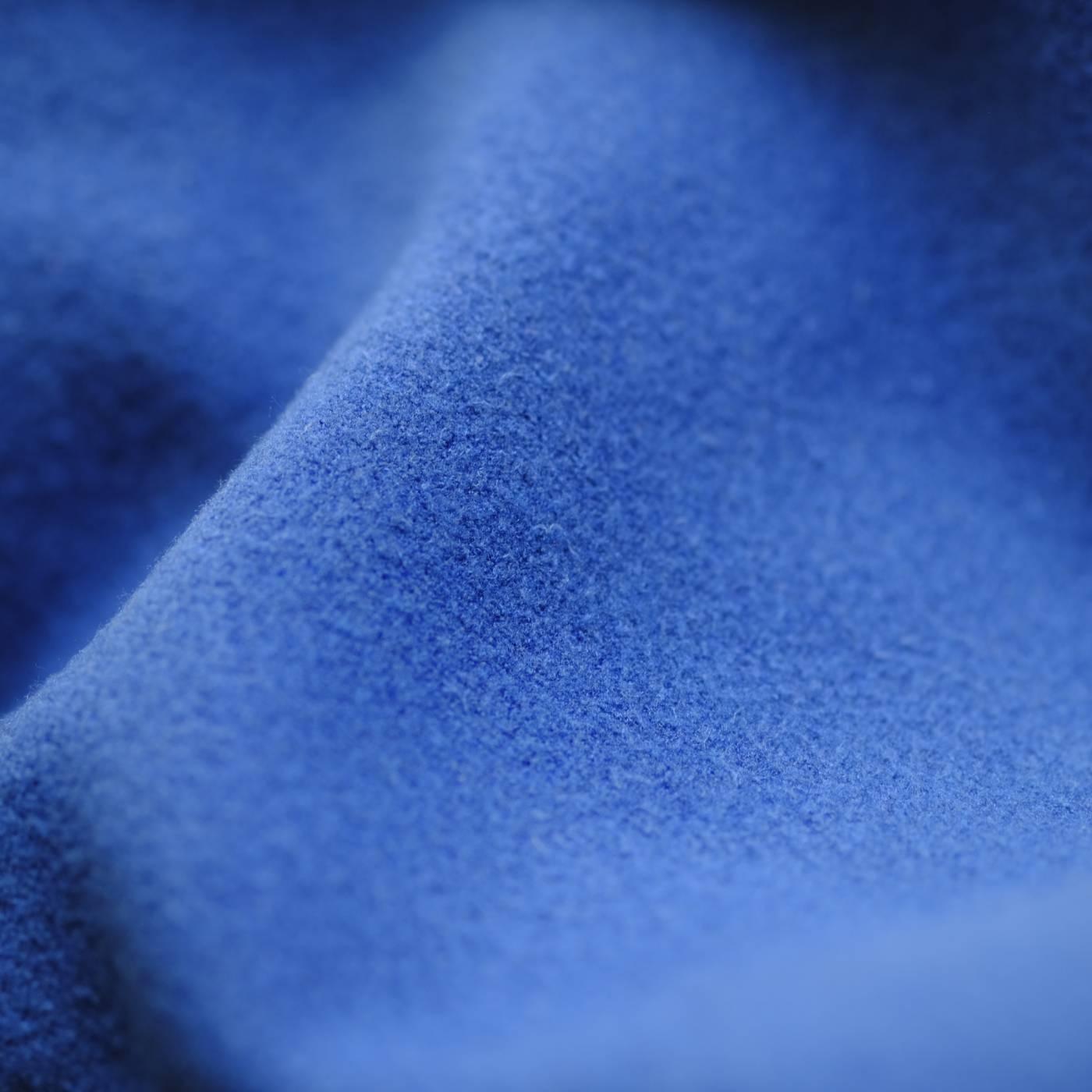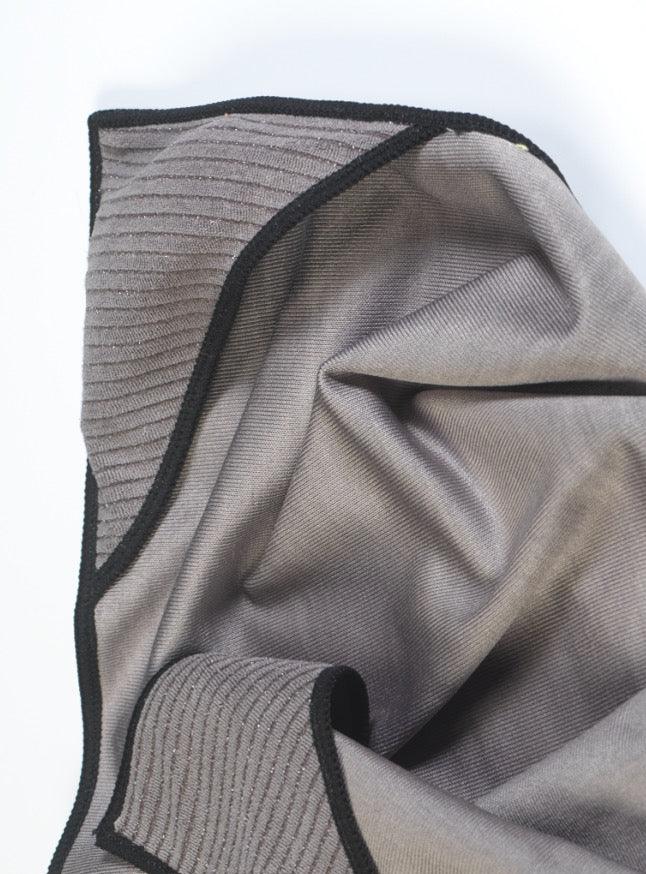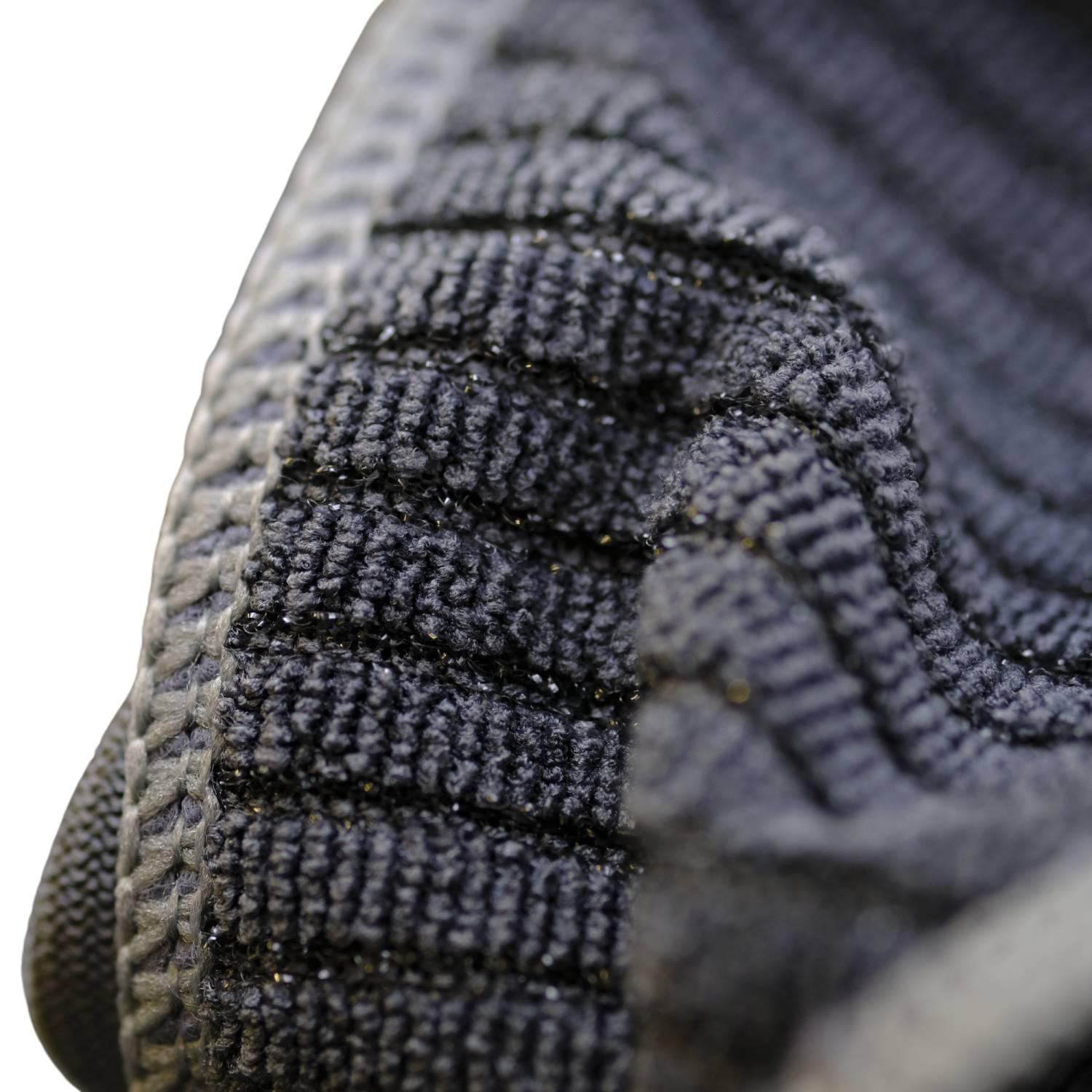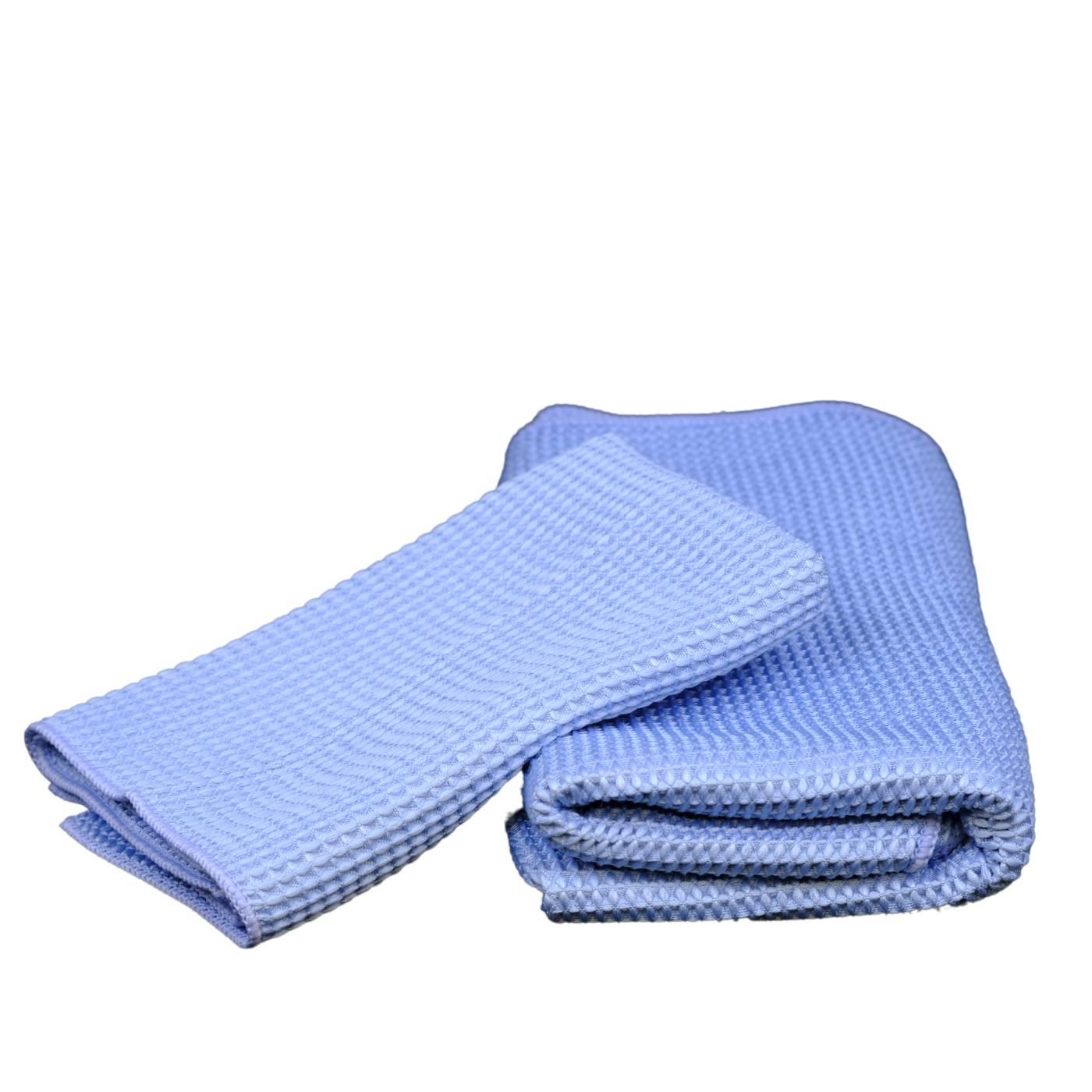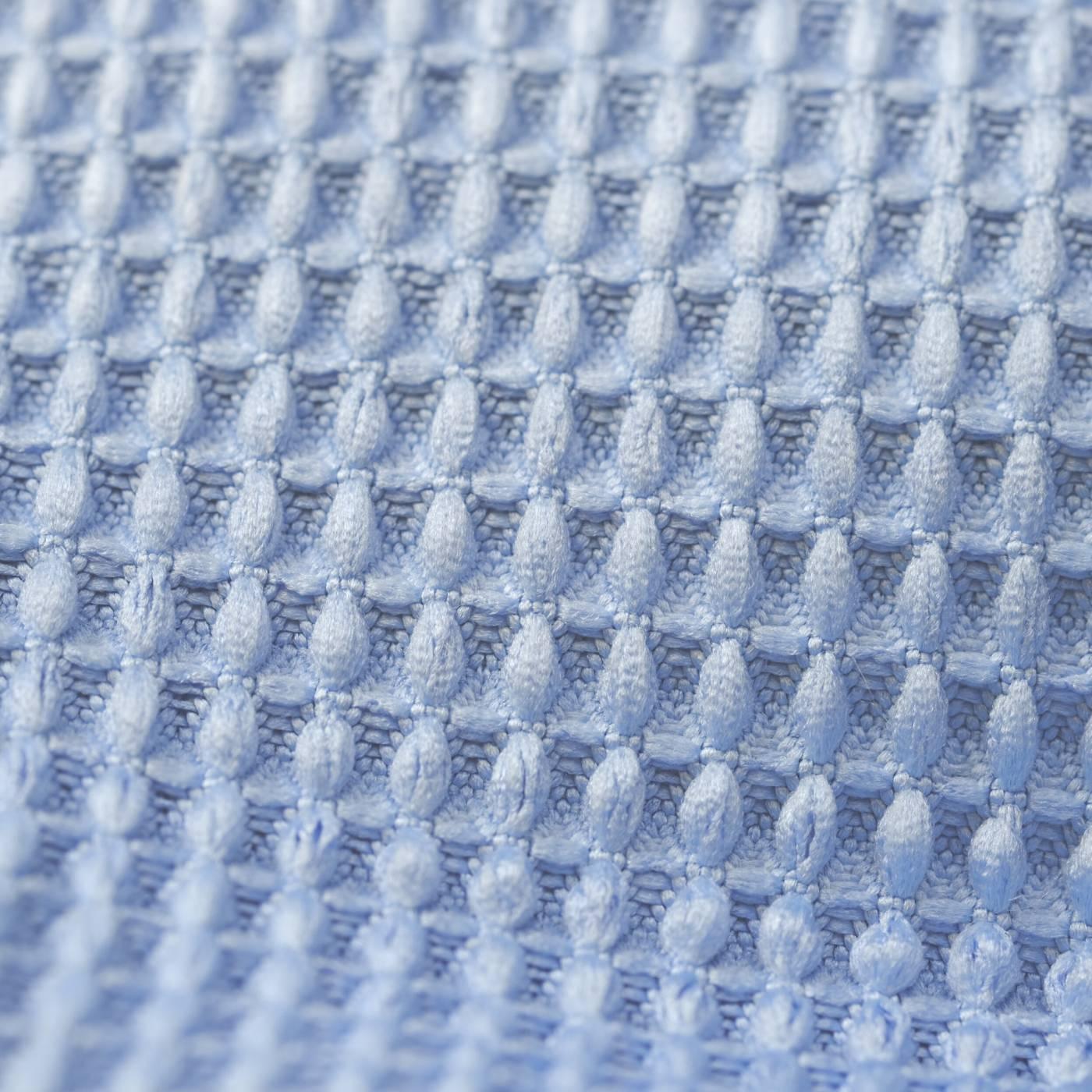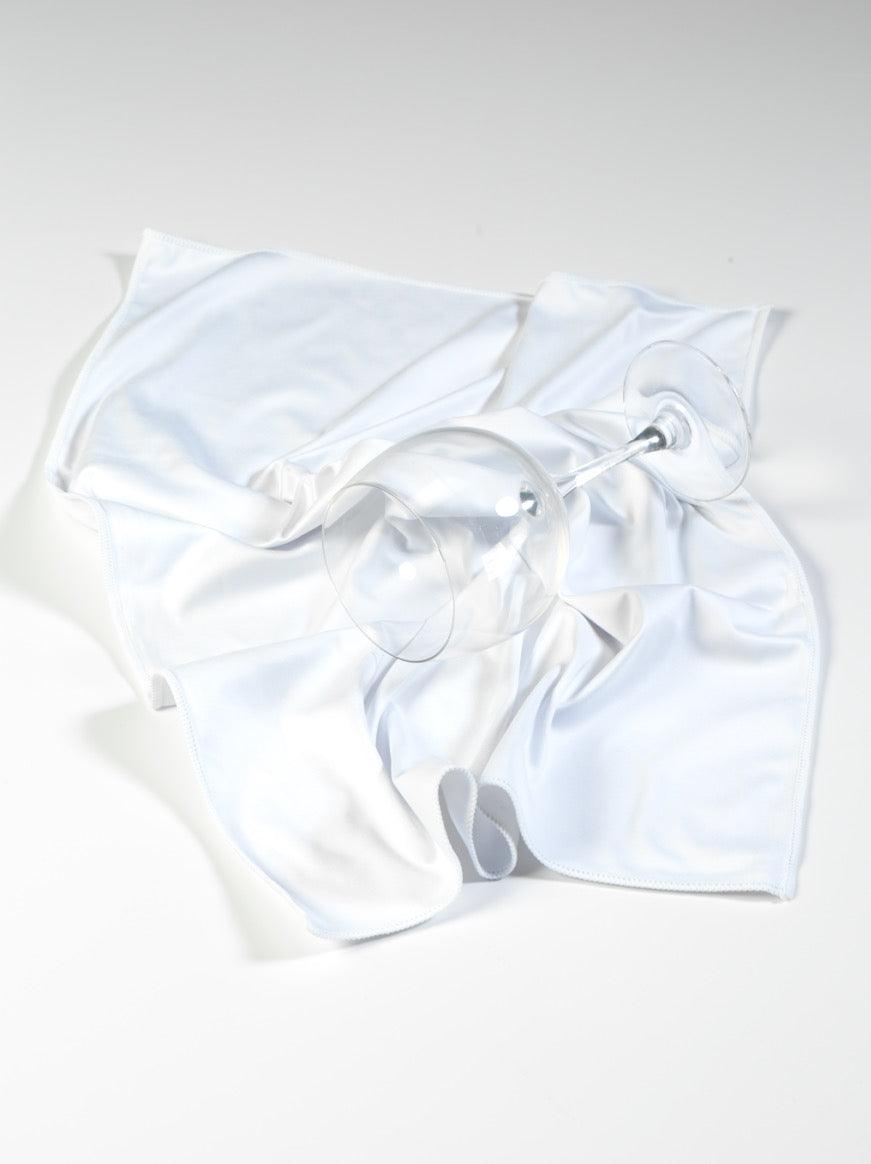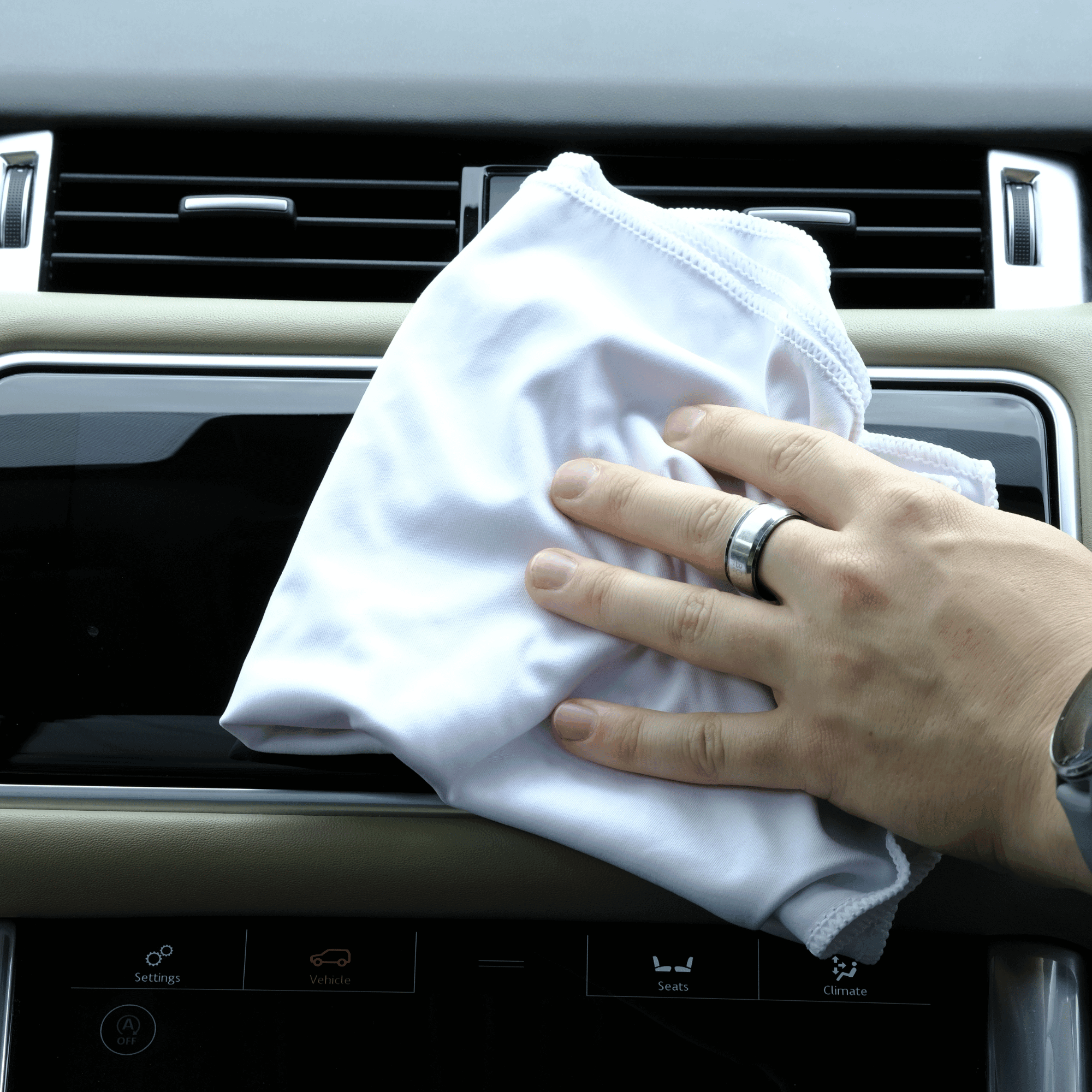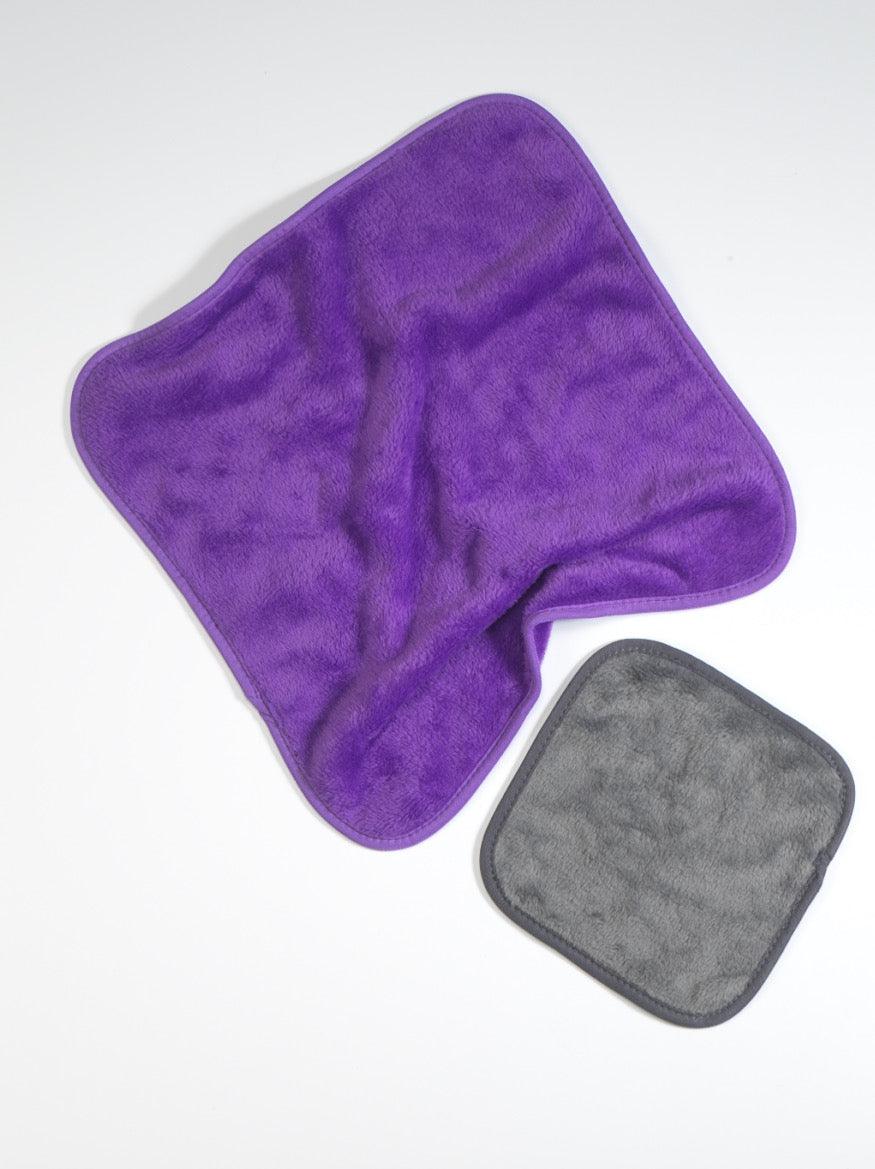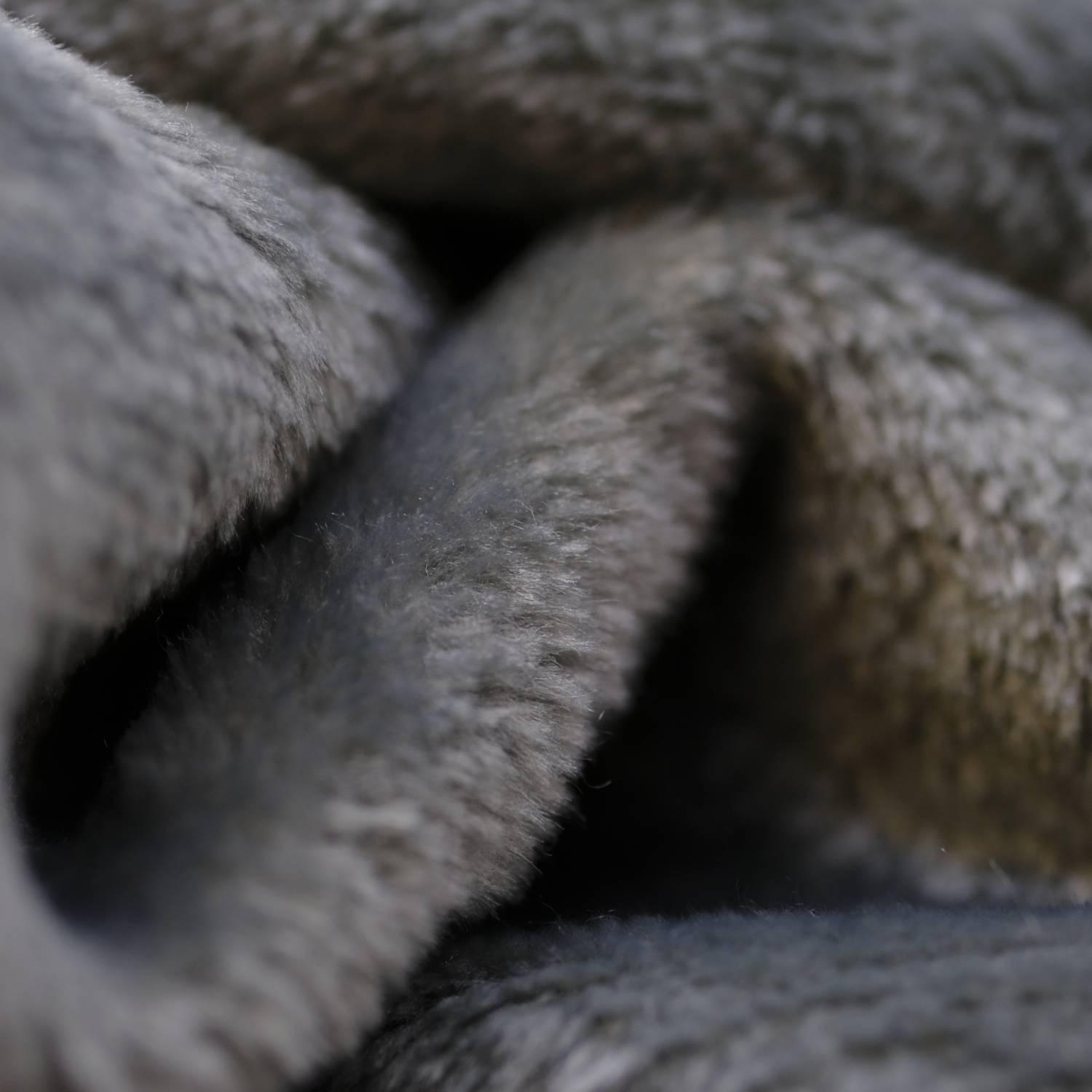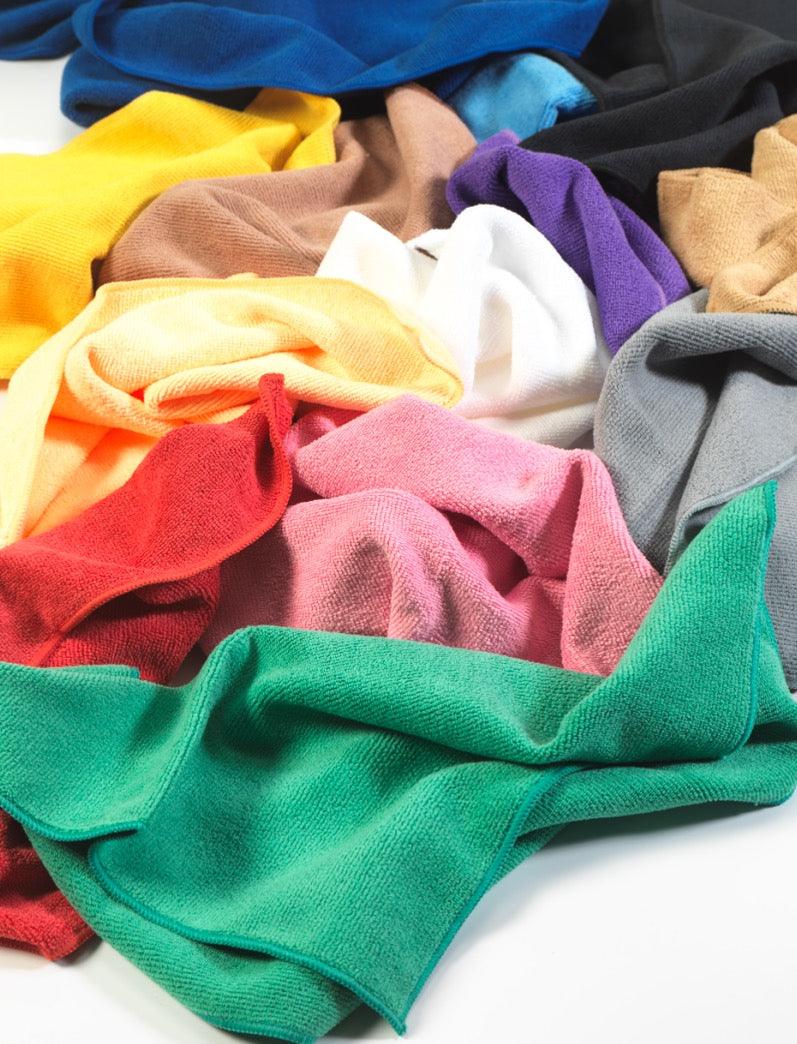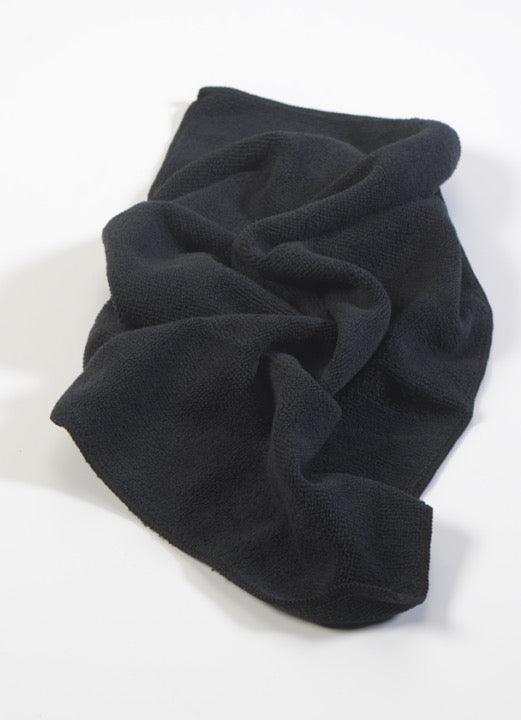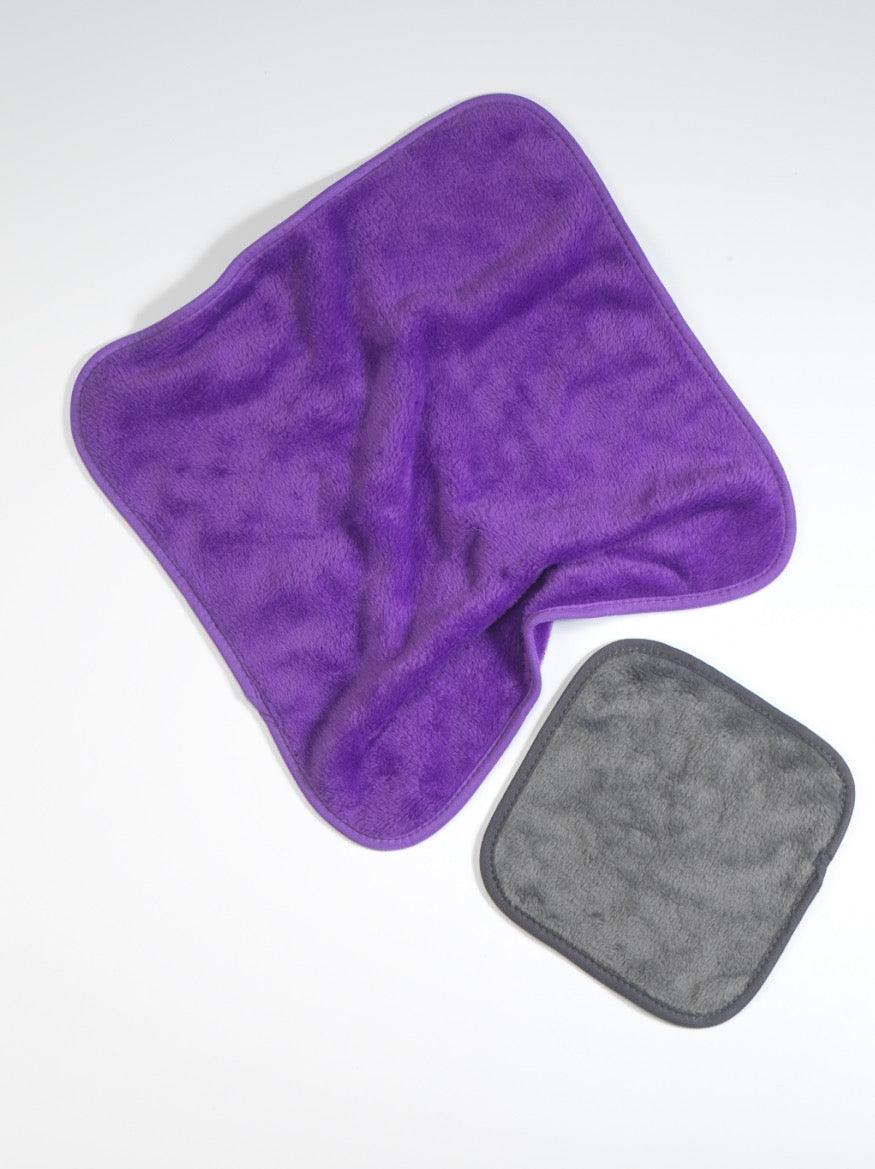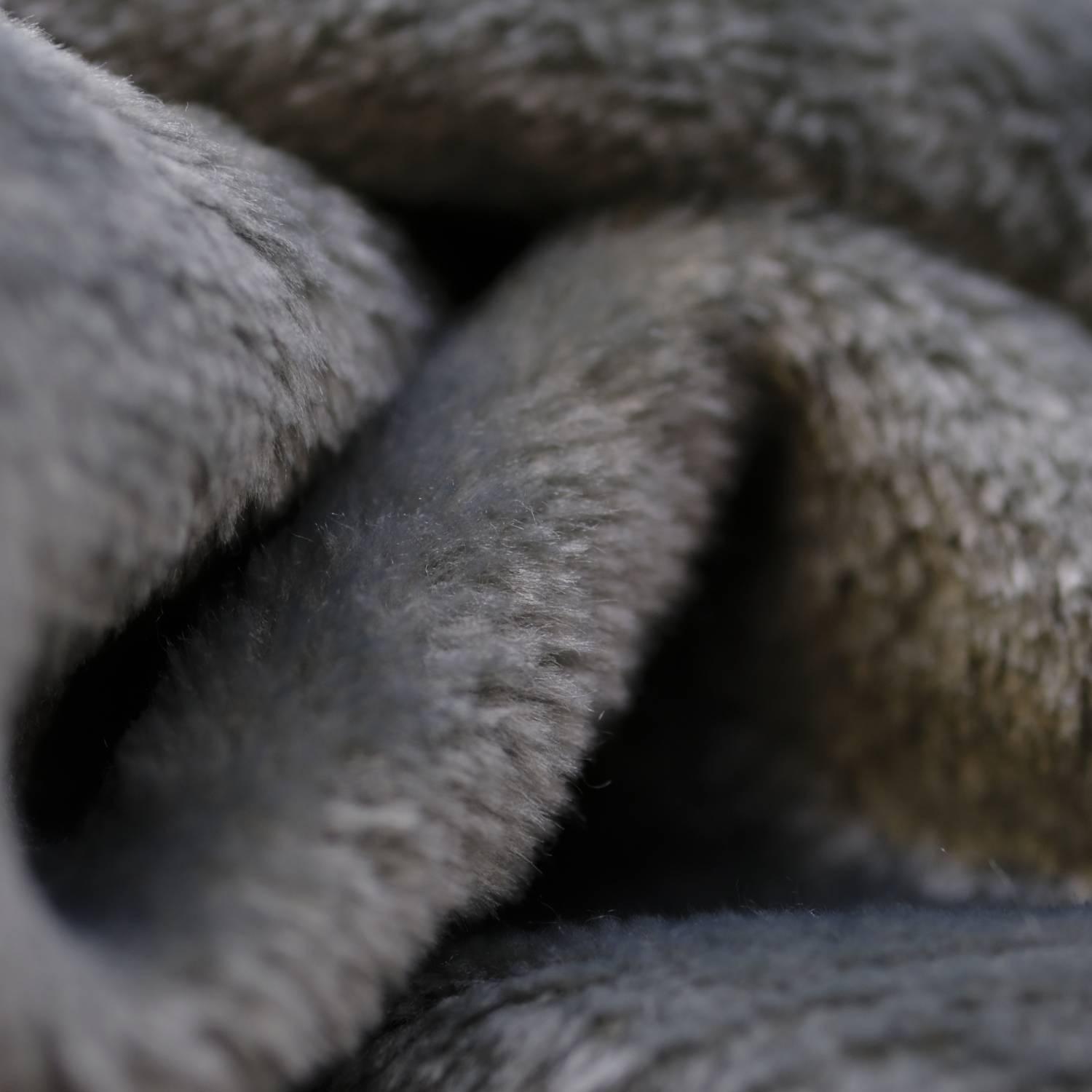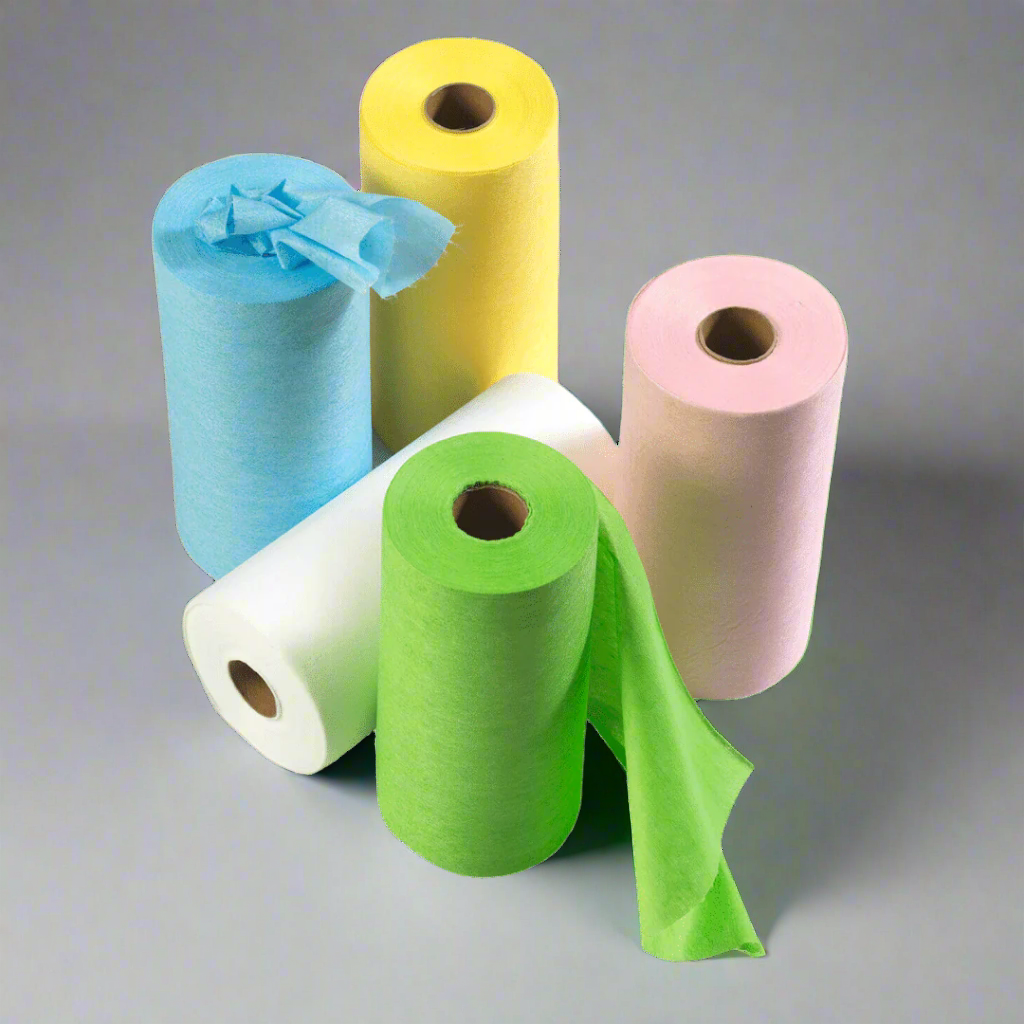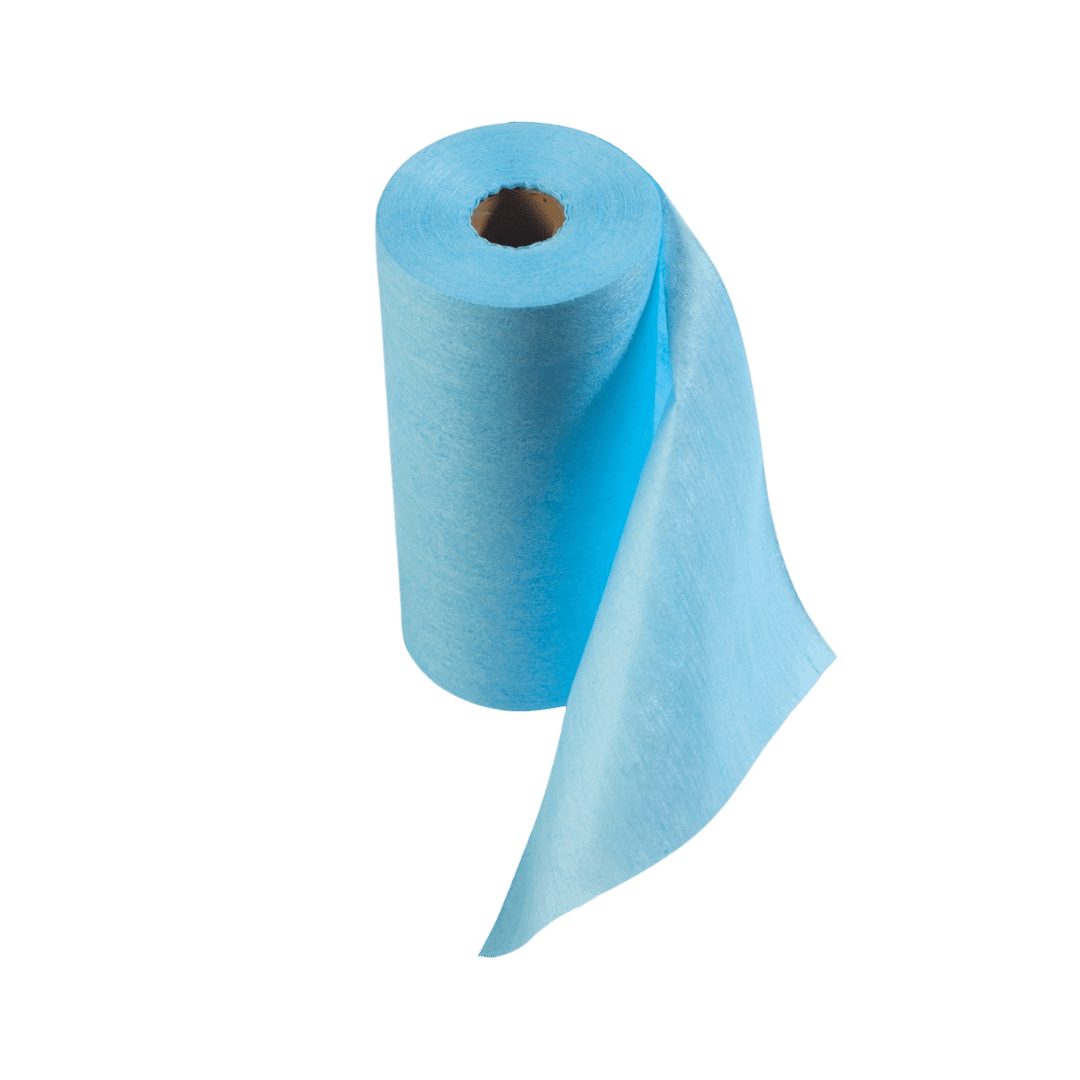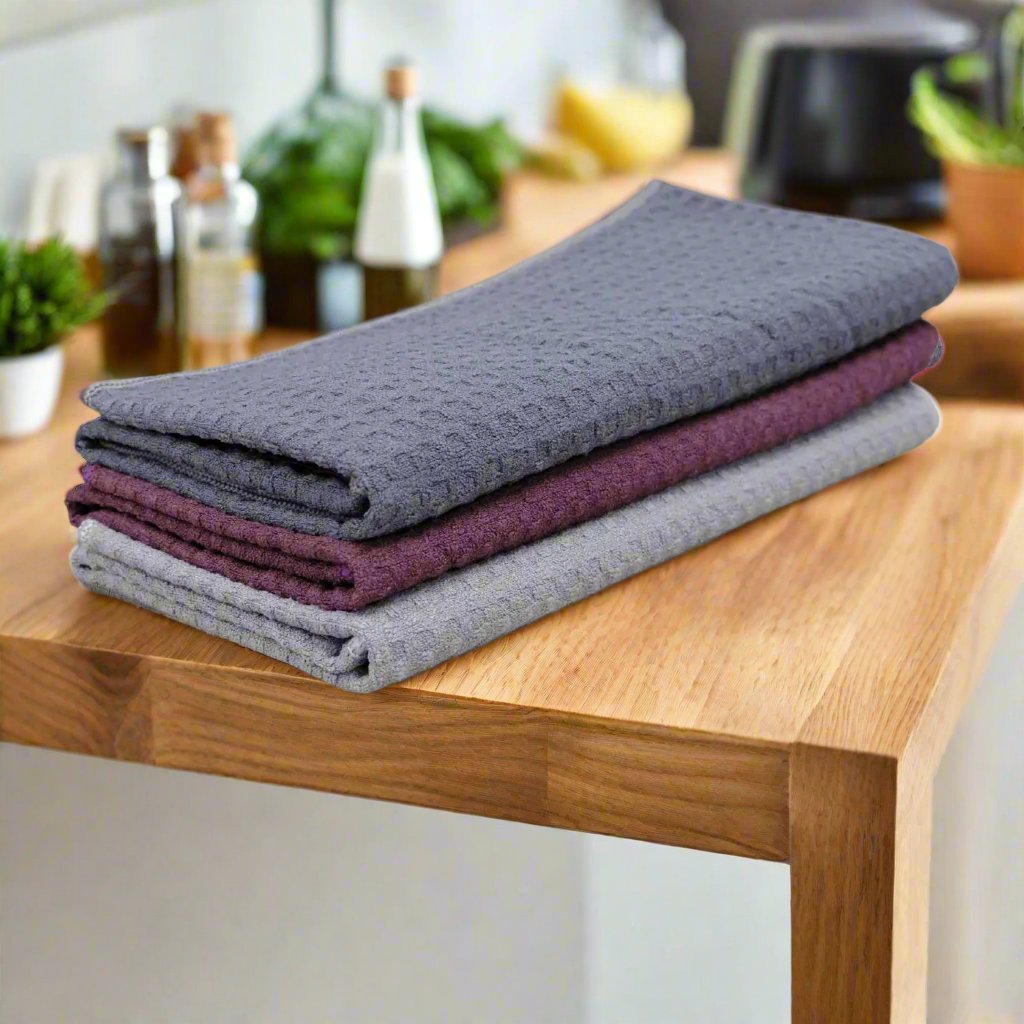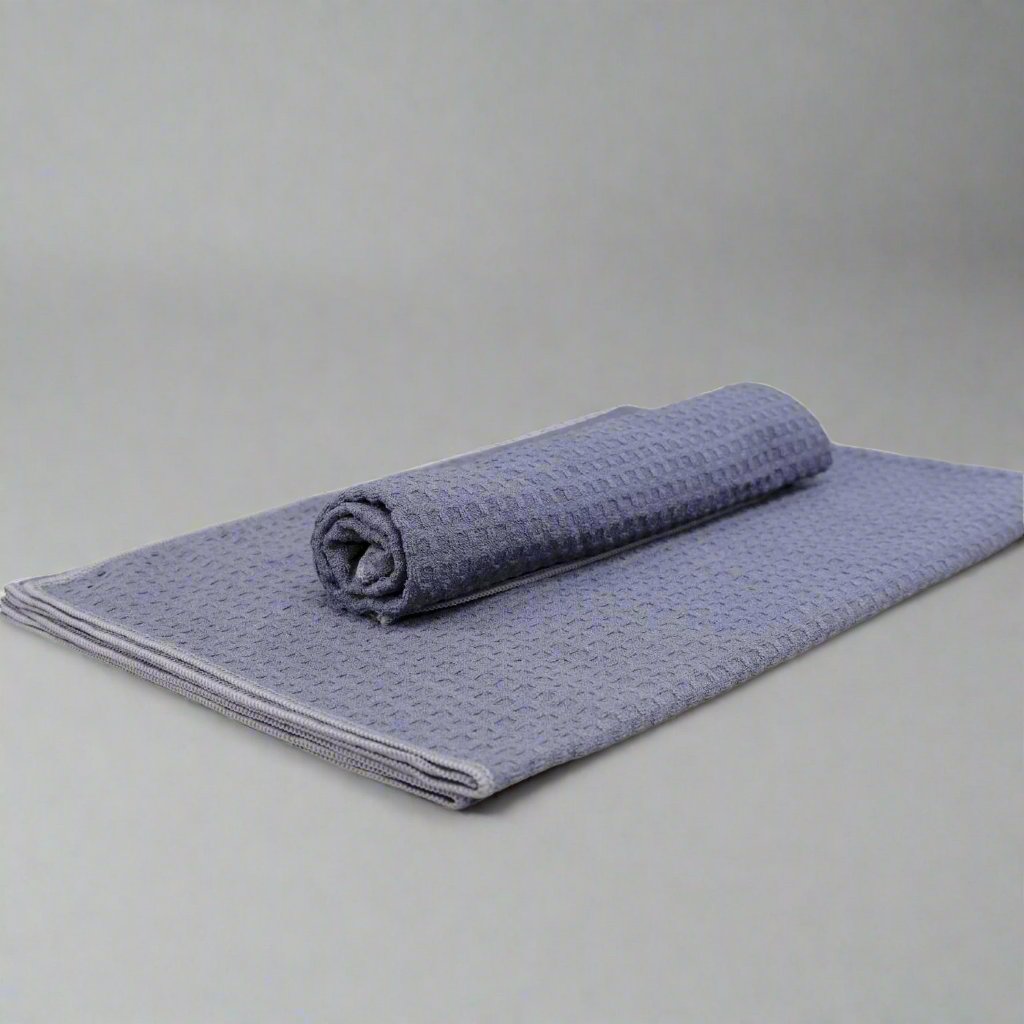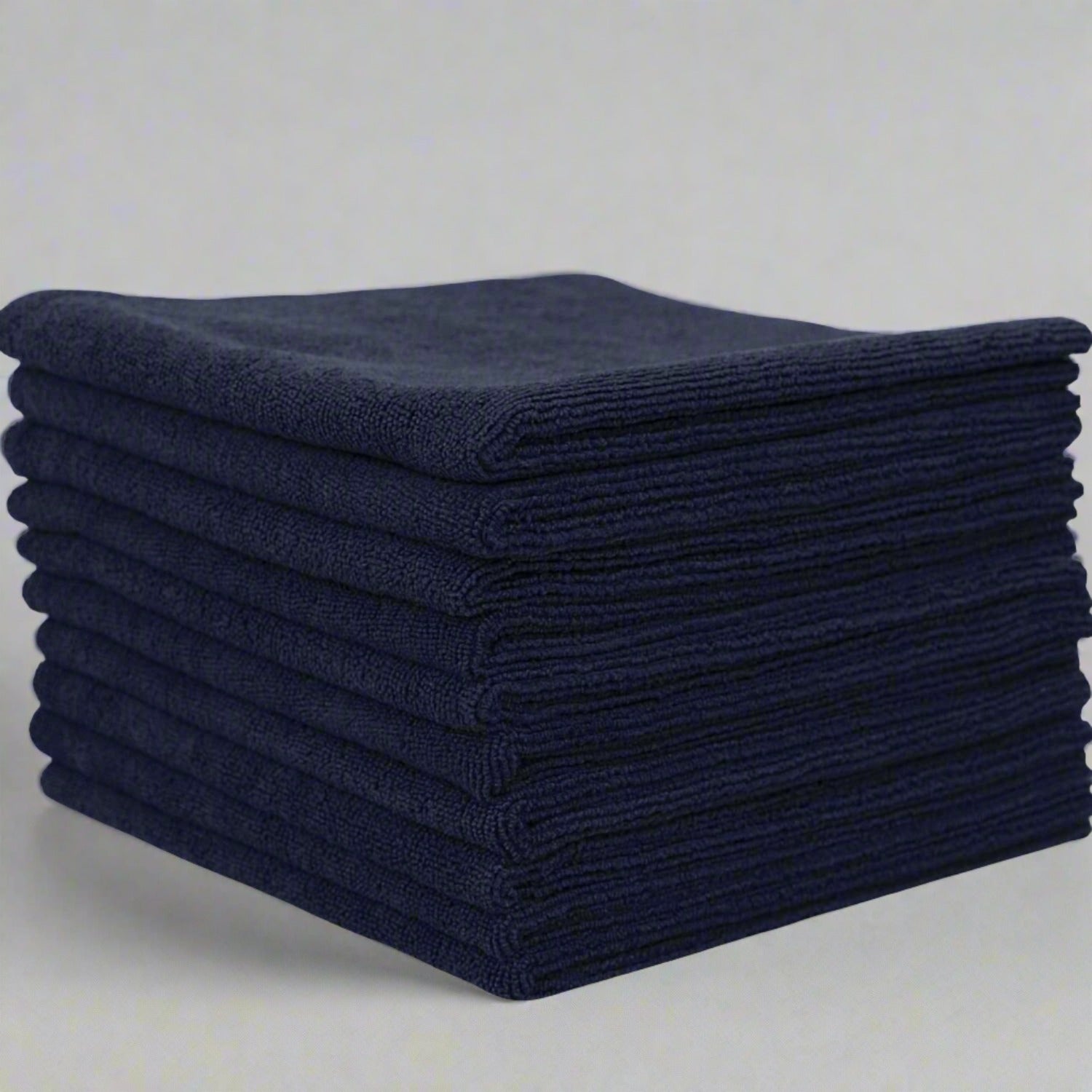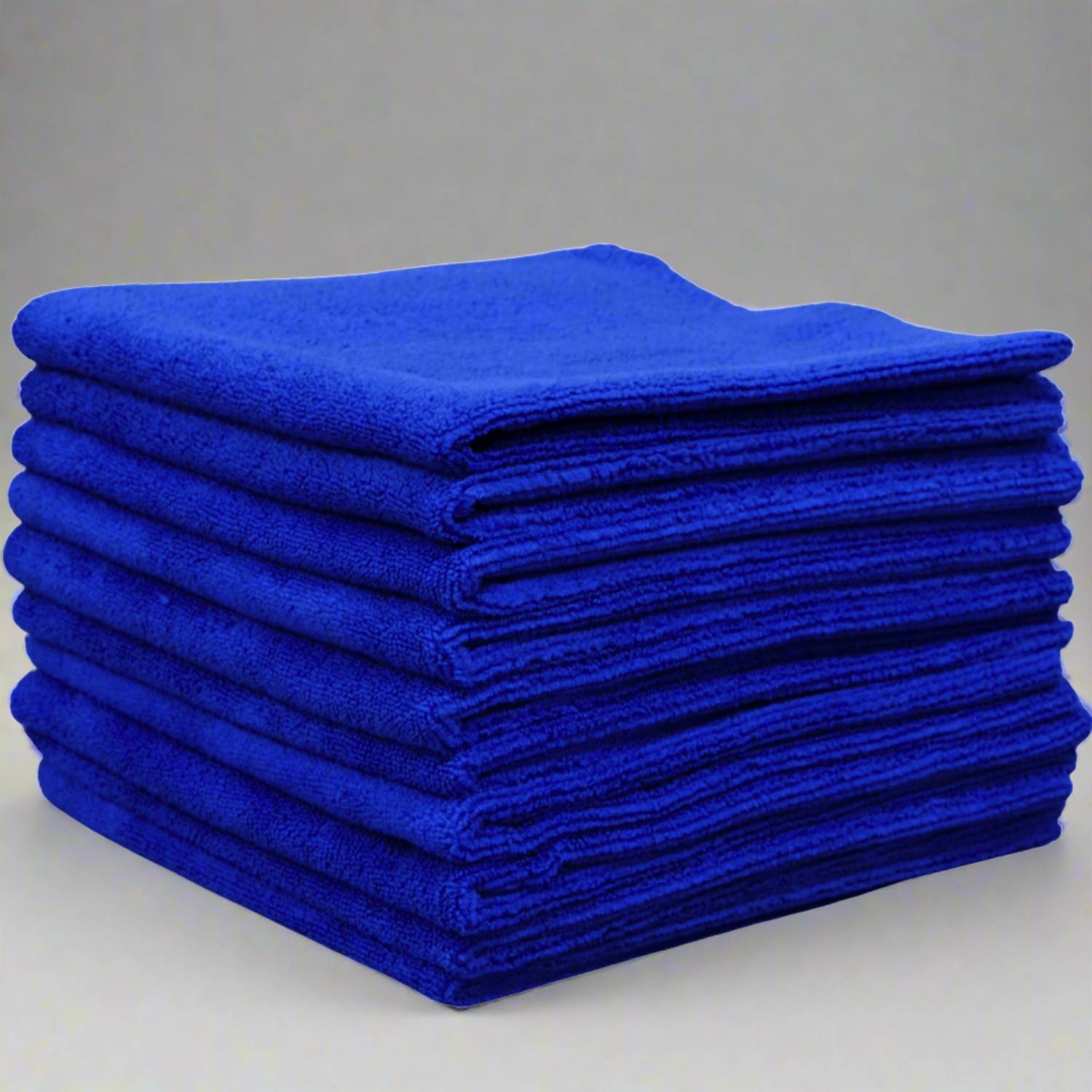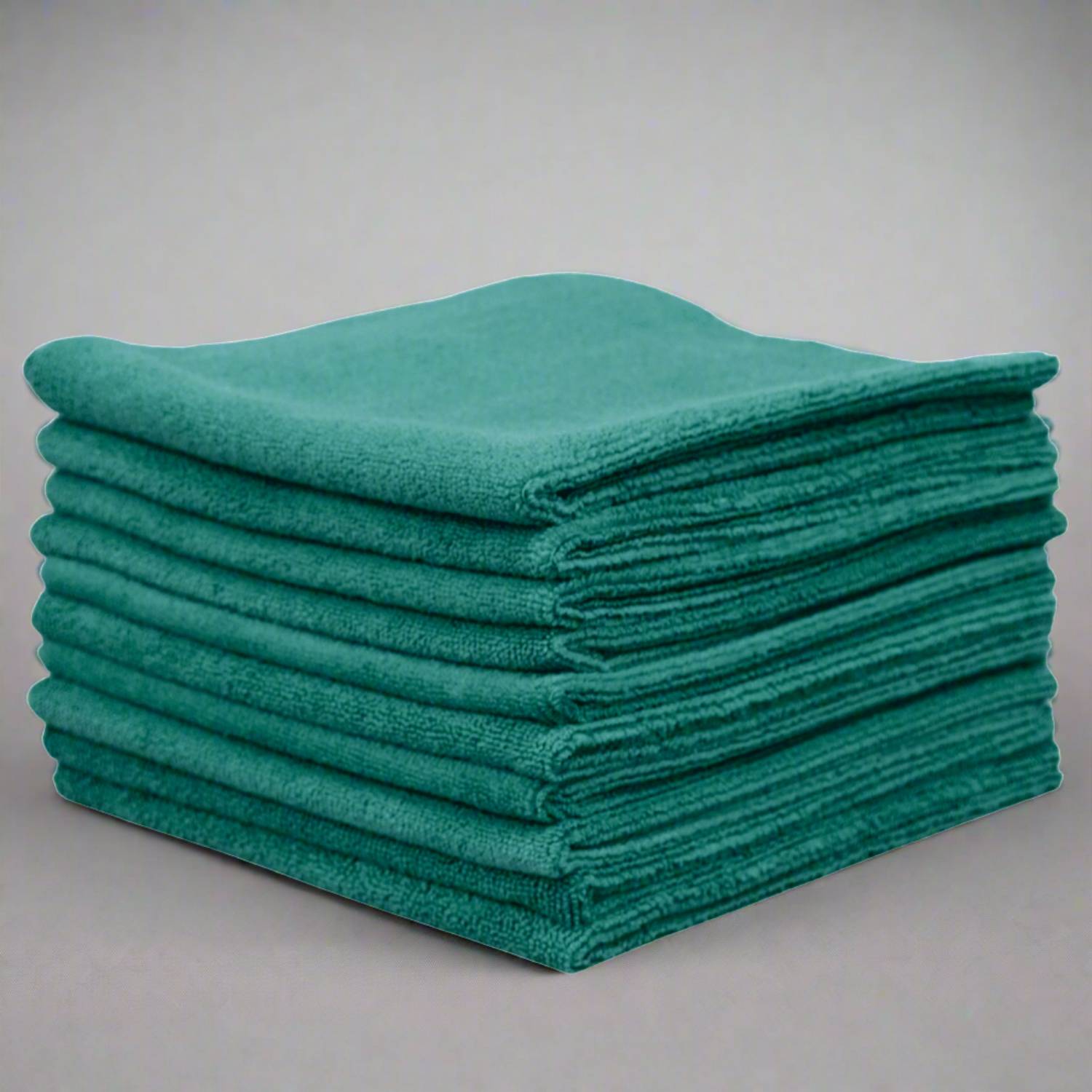Microfibre Cloth FAQs
What kind of surfaces can I clean with microfibre cloths?
Microfibre cloths work wonders on a wide range of surfaces, including glass, mirrors, stainless steel, countertops, tile, and ceramics, as well as larger items around the home or office like cars, furniture, and appliances. Their non-abrasive surface also makes them a good option for delicate items like eyeglasses, screens, and other electronics.
Their versatility and durability make them popular not only with hotels, restaurants, and other industries that require regular cleaning but also with a large and increasing number of households.
Avoid using microfibre cloths on rough, scratchy, porous, or very hot surfaces.
Why are microfibre cloths good for cleaning?
The key to microfibre cloths’ exceptional cleaning power lies in their split fibre structure. Compared to natural cloths with large fibres, synthetic microfibre cloths offer significantly more surface area for dust, dirt, particles, and moisture to get trapped in, resulting in more ‘cleaning power per wipe’. When used dry, the electrostatic charge between the fibres also helps pick up dust and other microscopic particles without having to resort to chemical cleaners.
Even the lowest-density microfibre cloths can hold more than their weight in moisture, making them an excellent go-to for cleaning spills and mopping up messes around the kitchen.
What colours of microfibre cloths do you offer?
How to keep microfibre cloths in good condition
When used and cleaned correctly, microfibre cloths keep their cleaning power for much longer than you might expect. To keep yours fresh and ready to serve:
- Hand or machine wash your microfibre cloths separately using a gentle detergent and cool or warm (up to 60°C) water. Avoid bleach or fabric softeners that will reduce the cloth’s absorbency. Air dry or dry at a low heat setting to avoid warping or shrinking.
- Store microfibre cloths in a dry space away from dust to maximise their cleaning power. Store them flat or neatly folded.
- Avoid using microfibre cloths on hot surfaces that can melt the fibres and rough or textured surfaces that can snag fibres and shorten their lifespan. When used to clean oil or grease, make sure to use appropriate cleaning agents to avoid gunking up the fibres and making them difficult to clean.
How long do microfibre cloths last?
With proper care, high-quality Paragon Microfibre Cloths can last anywhere from 300 to 500 machine wash cycles, making them a cost-effective cleaning solution for the home, office, and vehicle.
Can microfibre cloths clean without chemicals?
Yes, microfibre cloths can effectively clean dust or dirt from many types of surfaces either dry or only using water.
What if I want to place a very large order?
Absolutely. We regularly supply businesses and distributors with large-volume orders. We offer bulk pricing, fast dispatch, and can tailor packaging or labelling if required. Just contact us with your requirements, and we’ll provide a customised quote and lead time.
Can the microfibre cloths have my company branding on them?
Yes – we offer bespoke branding options for businesses. This includes printed or woven labels, custom colours, and packaging with your logo. Minimum order quantities apply depending on the specification, so feel free to get in touch to discuss your needs.
Can I have cloths without any labels at all?
Yes, we can supply cloths completely unbranded—no labels, no tags. This is ideal for resellers or detailing professionals who want a clean, neutral product. Just let us know by adding a note to your order in the cart section.
Is it ok to just buy small quantities of the cloths?
Of course. Whether you’re testing a new cloth or simply stocking up for personal use, we welcome all order sizes. Just checkout directly through our website—no account or minimum quantity required.
Understanding GSM
Our guide on understanding Grams per Square Metre (GSM)
What does GSM stand for?
GSM stands for Grams per Square Metre, and it’s the most common unit of measurement indicating the thickness or density of products such as fabrics, packaging materials, and paper.
When it comes to microfibre, a higher GSM means thicker, plushier, and generally more absorbent cloths, while lower-GSM cloths are thinner, lighter, and quicker to dry.
Understanding GSM ratings in microfibre cloths
- Less than 200: Ultra-low GSM
- 200-300: Low GSM
- 300-400: Average / Medium GSM
- 400-600: High GSM
- More than 600: Ultra-high GSM
How do I choose the right GSM microfibre cloth for each job?
When choosing which GSM microfibre cloths to purchase, it’s important to consider the tasks at hand.
For delicate cleaning tasks, such as glass, mirrors, or electronic screens, lower-GSM cloths (200 to 300 GSM) work well. These tasks don’t require you to absorb a lot of moisture, a task best left to higher-GSM cloths, and lightweight microfibre cloths are easy to rinse and wring out for quick cleaning. They’re available in smaller sizes and multipacks, so consider keeping one or two low-GSM microfibre cloths in the car—one for your sunglasses and another for the windows.
For general-purpose cleaning, including kitchens, counters, appliances, and vehicles, medium-GSM microfibre cloths (300 to 400 GSM) offer a good balance of absorbency, durability, and cleaning power.
For tasks that require heavy-duty drying, such as drying cars or soaking up spills, it is hard to match the absorbency of high-GSM microfibre cloths (400 to 600 GSM). Thicker, plushier cloths hold on to liquid and dirt more effectively, making them ideal for your more demanding drying tasks.
Microfibre Cloth Buyer's Guide: What the experts want you to know about buying microfibre cloths
If you've ever cleaned your car, kitchen, or pretty much any other surface in your home with a microfibre cloth, you probably don't need to be sold on them anymore. You've tried it, and it works!
That said, like most things in life, not all microfibre is created equal. Beyond just the obvious differentiating factors like manufacturing quality and plushness, premium microfibre manufacturers may also create specific surface finishes that perform better at certain tasks, apply coatings or additives to achieve specific characteristics such as colour-fastness, and rely on advanced weaving techniques to enhance durability and cleaning efficiency.
As the leading UK suppliers of domestic and commercial microfibre products, we've put together this guide to help you pick the right microfibre cloth for the right task, every time!
The three most important considerations when buying microfibre cloths
High-quality microfibre products may last in excess of 500 machine wash cycles. Poor quality microfibre starts fraying after no more than a handful of uses. Frustratingly, the price difference between the two is often no more than marginal, and if you're willing to spend just a little bit more and know what to look for, you should be able to identify the right microfibre to serve you for years to come.
1. General material quality
Admittedly, it can be tricky to visually identify lower-grade microfibre just by sight; however, there are a few indicators to look out for.
- Inspect the packaging to find the polyester-to-polyamide ratio. High-quality microfibre typically sits around 70% to 30%, with lower-quality manufacturers often adding more polyester to save costs.
- Check the edges. High-quality microfibre products should have thoroughly stitched or rounded edges to prevent fraying. Low-quality microfibre often has raw or sloppily stitched edges.
- Try a test swipe on some dust. Good microfibre will trap and lift the dust. Poor quality microfibre will push it around.
2. GSM (Grams per Square Metre)
A microfibre cloth's GSM rating indicates how thick and plush it is. For quick, light dusting or for cleaning delicate, moisture-sensitive electronics like screens or laptops, lower-GSM microfibre cloths (200–300 GSM) are a good choice—they're lighter, thinner, and dry faster. 300 to 400 GSM, or medium-GSM cloths, are ideal for most cleaning tasks, especially in the kitchen, workshops, and for vehicles. High GSM cloths (500+) are incredibly plush and absorbent, and usually reserved for detailing, drying, and polishing delicate surfaces.
Where lower-GSM cloths are less plush and absorbent, they're lightweight, quick-drying, and fold down small. As the GSM increases, the towels become heavier, softer, and more absorbent at the cost of time-to-dry and thickness.
3. Weave type and surface finish
Generally, microfibre is flexible and most cloths will yield at least acceptable results. That said, choosing the right weave type or surface finish can help you get even better results with less effort.
- Terry weave: This is the most common type of weave for most microfibre cloths and towels. Featuring a looped surface that loosens, lifts, and traps dust and grime, Terry weave is the go-to for most general-purpose cleaning tasks.
- Tight or closed weave: These cloths have a smooth and flat surface that is ideal for streak-free cleaning on glass, mirror, or polished metal surfaces.
- Plush or long-pile cloths: Ultra-soft and absorbent, choose long-pile for drying tasks where you can't afford any scratches, for example, drying your car.
- Pearl knit, waffle, and fish scale: Specialist weaves may be used for better performance on specific surfaces. Scroll down to learn more.
When to consider specialist microfibre cloths
Beyond the factors mentioned above that affect all microfibre cloths, premium microfibre suppliers often stock specialist cloths with some interesting and unique features.
- Silver nitrate antimicrobial cloths: Microfibre cloths treated with a silver nitrate solution offer antimicrobial properties, making them suitable for food prep areas, hospitals, and bathrooms.
- Disposable microfibre rolls: Similar to paper kitchen towels but more absorbent and less likely to tear when soaked, disposable microfibre rolls are ideal for the hospitality industry, cleaning up chemical spills that will harm other cloths, or to keep in the car.
- Microfibre cloths with built-in scourers: While microfibre is unequalled in lifting and trapping dirt, tough or caked-on grime can sometimes be a bit more of a challenge. A built-in, glass-safe scourer works wonders on tougher grime and can be a game-changer when it comes to cleaning ceramic hobs.
- Colour-coded cloths: An absolute must where cross-contamination is a risk, for example, in hospitals or commercial food-prep areas, colour-coded microfibre cloths make it easy to dedicate specific cloths to specific tasks. At home, ‘the red ones go in the kitchen, the yellow ones live in the bathroom, and you wash your car with the blues.'
A closer look at weave types
We stock many cloths with many different weaves, which can, admittedly, be confusing when scrolling through our range. This guide should help you pick the best options for your cleaning tasks.

Short Pile
For instance, we stock four Terry short pile weaves: our EcoWipes, Recycled EcoWipes, Premiums & Seamless Terry. These cloths are excellent for scrubbing and removing dirt and grime from surfaces. In addition, these microfibre cloths are particularly effective for cleaning kitchens and bathroom surfaces and removing heavy stains.

Plush Weave
The longer, denser piles like our 1000 gsm, seamless fleece, Terry 450gsm (also has a short pile on the reverse side) and whisper soft are much softer cloths/towels, making them more absorbent, which makes them great for drying or dusting sensitive surfaces.

Pearl Knit
We have two cloths with pearl knit weaves. This is a super tight weave, made to the highest quality possible. If these cloths are cared for properly, they can last for many years.

Waffle Weave
Our waffle cloth pattern allows the microfibre cloth to hold, retain and absorb water much more accessible than a traditional drying towel.

Flat Weave & Fish Scale Weave
Traditional glass cloth has a flat weave design that is much more delicate than traditional microfibre cleaning cloth. In turn, it allows for a lower absorption rate but makes it easier to rinse, preventing smear marks. Glass cloths are more for polishing rather than cleaning. However, our fish scale can do both jobs. With the aggressive fish scale pattern, it can clean & polish dirty windows.
Paragon Microfibre's Top Cloths
Here is a list of our top product recommendations for your specific needs.
Most affordable - EcoWipes
Our general-purpose cloths are far superior to traditional J-cloths and supermarket microfibre cloths. We have designed our cleaning cloths to the highest quality possible for a very affordable price. Also, you can launder these cloths over 300 times, and if they are cared for properly, they can last for many years.
Top Cleaning Cloth - Premiums
Our microfibre premium cloths contain a mix of 70% polyester & 30% polyamide. The polyamide content is what makes this cloth 'premium'. The higher the polyamide content, the more absorbent and softer the fabric is. Therefore, we have designed this cloth to reach the highest amount of polyamide possible. If we were to add more, it would become too weak and break down.
Also, we have designed these cloths with a high splitting ratio, called 'ultra-split'. After the ultra-split process, the fibres are 1/300 the thickness of human hair, producing an incredibly soft material. Our super soft and extra-dense fibres are much more absorbent and superior at picking up bacteria, dust, dirt and grime, which makes this cloth perfect for hundreds of uses.
Our best drying towel/cloth - Diamond Weave
Our high-tech 500GSM Diamond Weave Drying Towel is the best on the market. It has the highest absorption rate compared to any other towel we offer. It's constructed using a sandwich technique, which allows for three layers of super-absorbent microfibre. If you're looking for a high-quality drying towel, this is the one. Drying towels do not always need to be fluffy & plush to be absorbent. Also, having a drying towel which is not fluffy makes it far easier to rinse, clean and wring out.
Our best cloth for hygiene-controlled areas - Silver Nitrate
The silver nitrate qualities embedded in these cloths are best suited for bathroom and kitchen cleaning due to their bacteria-killing properties, making them far superior to other microfibre cloths for cleaning germ-infested areas.
Our best glass/window cleaning cloth - Fishscale
The next-generation glass cloth. We have designed this cloth to be more aggressive than our traditional standard weave glass cloth, with higher absorption qualities. The fish scale patterns also allow for easier grime removal.
Our best cloth for sensitive surfaces - Optical Quality
Our optical-quality glass cloth is ideal for all sensitive surfaces, such as cameras, laptops, mobile phones, wine glasses and much more. We make our optical cloths using an ultra-split ratio to produce a soft, sensitive work cloth.
Microfibre buyers' guide FAQs
What are microfibre cloths made from?
Microfibre is a synthetic fibre. The material used is mainly polyester, polyamide & nylon. These materials are then woven together and dipped through a chemical process to break down the fibres. This process is known as splitting. The fibres get split down or even ultra-split (depending on the polyamide content) for premium products to be as small as 1/300th the diameter of a human hair. The higher the Polyamide content, the softer the cloth will be.
You may be thinking, why do the fibres need to be that small? Well, when fibres get split down to that size, it is super beneficial for collecting dust and grime & absorbing moisture. Each strand can absorb and hold on to the contained substance instead of pushing it around the area due to its ultra-fine fibres. In addition, the tiny fibres of the microfibre cloth can reach and remove dirt and grime that traditional cleaning cloths may miss.
Microfibre cloths are also great to use dry as the tiny fibres create a positive static charge which draws in dust & dirt. Unlike cotton cloths, which make a negative charge, which pushes dust & dirt away. When wet, the microfibres use capillary action, which draws in moisture.
In addition to their cleaning power, microfibre cloths are also known for their durability. These clothes can withstand hundreds of washings without losing their effectiveness, making them a cost-effective cleaning solution. They also dry quickly and don't leave behind lint or fibres, which can be a problem with traditional cleaning cloths. They are also lightweight, easy to handle and store, and take up less space than conventional cleaning tools.
Microfibre cloths are also environmentally friendly. You can wash and reuse them multiple times, reducing the need for disposable cleaning products. They also use less water, cleaning solution, and energy than traditional cleaning methods. This makes them an ideal choice for people looking to reduce their environmental impact and save money on cleaning supplies.
This leads to another massive benefit of using microfibre cloths. In most cases, you won't need cleaning chemicals. Instead, add water, and the cloth will collect and hold onto the soiling until washed. And with the ability to remove 99% of bacteria and germs, they are an ideal choice for cleaning areas that require a high level of hygiene.
What are the benefits of microfibre cloths?
- Excellent absorbing properties
- Cleaning chemicals are rarely required
- Super soft material for sensitive surfaces
- Reusable
- Collects bacteria until washed
- Premium cloths you can launder up to 500 times
- Collects and holds onto dirt, dust & grime
- Creates a static charge which draws in dust
- Uses capillary action when wet, which draws in moisture
- Strong durability
Our range consists of general-purpose cloths to specific specialist cloths. So whatever you need, we will have it, or we can make it!
Microfibre cleaning cloths are perfect for cleaning, polishing and wiping furniture and surfaces in kitchens, bathrooms and vehicles. These highly absorbing cloths can effortlessly pick up moisture, dirt, dust and grease from various surfaces.
What does GSM stand for?
Grams per square metre (GSM) is the density of the microfibre product. No matter what type of weave or length of the pile a cloth has, the higher the GSM, the more suited it is to absorb moisture.
